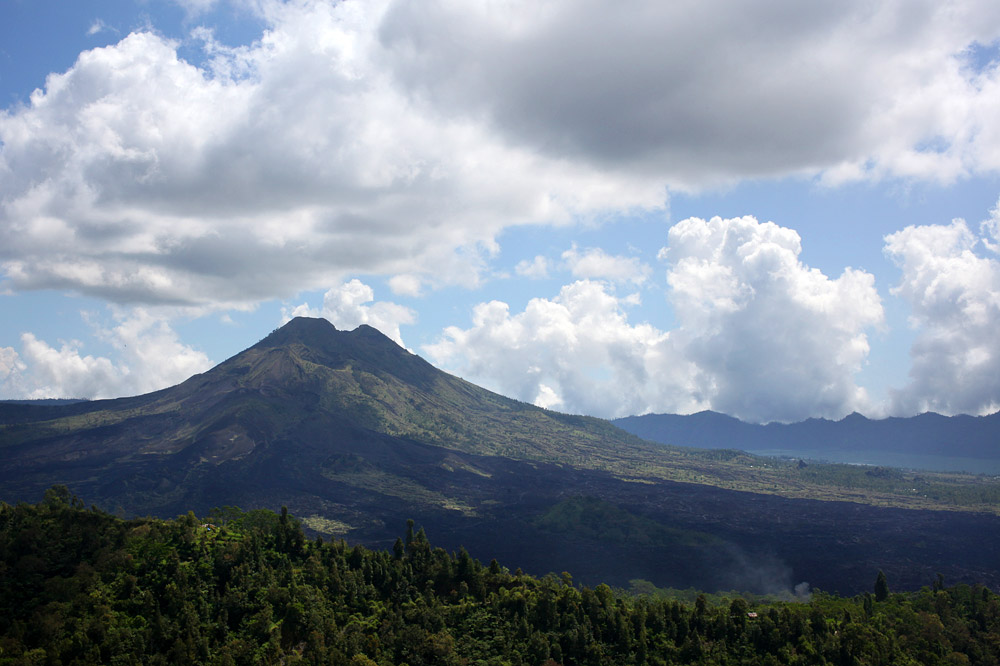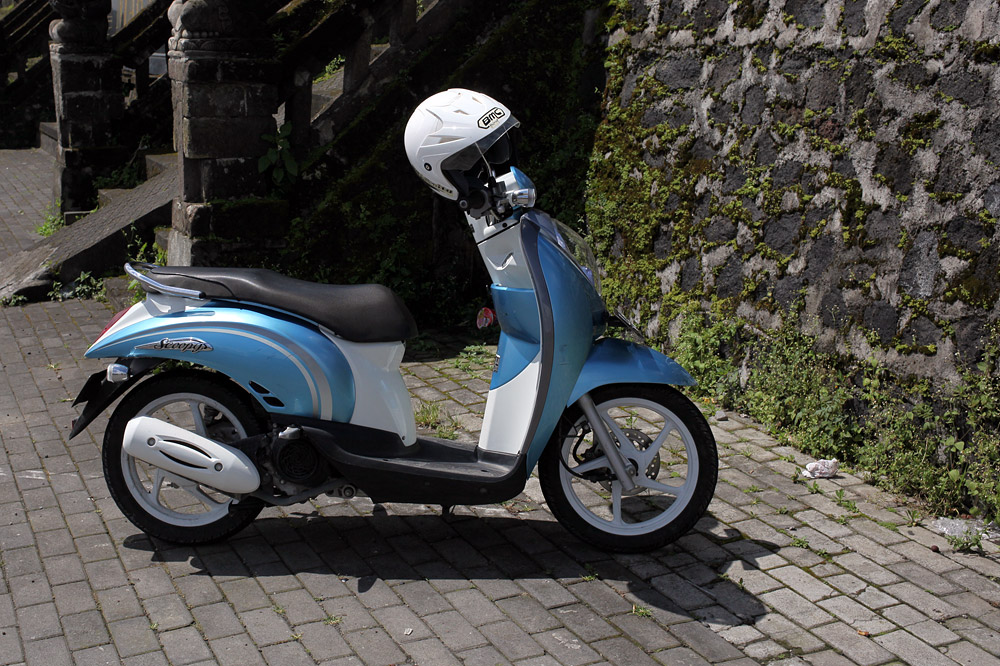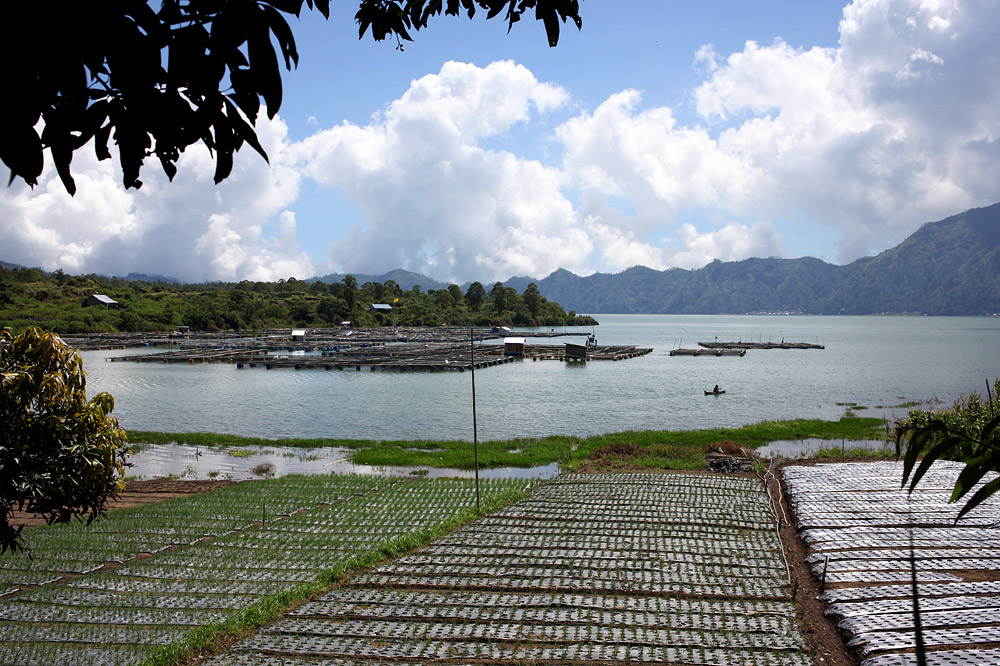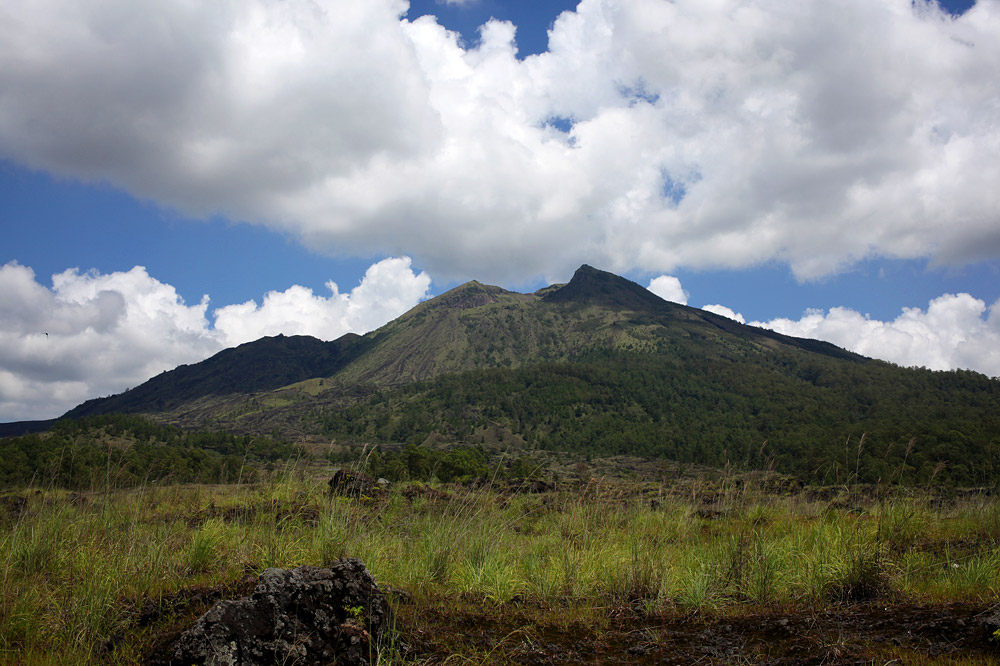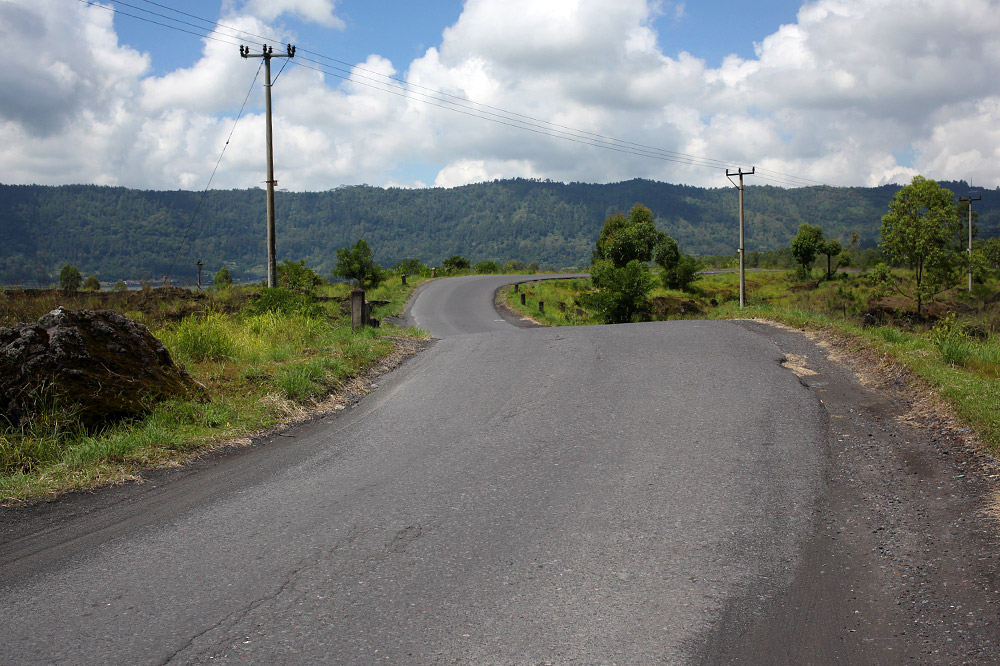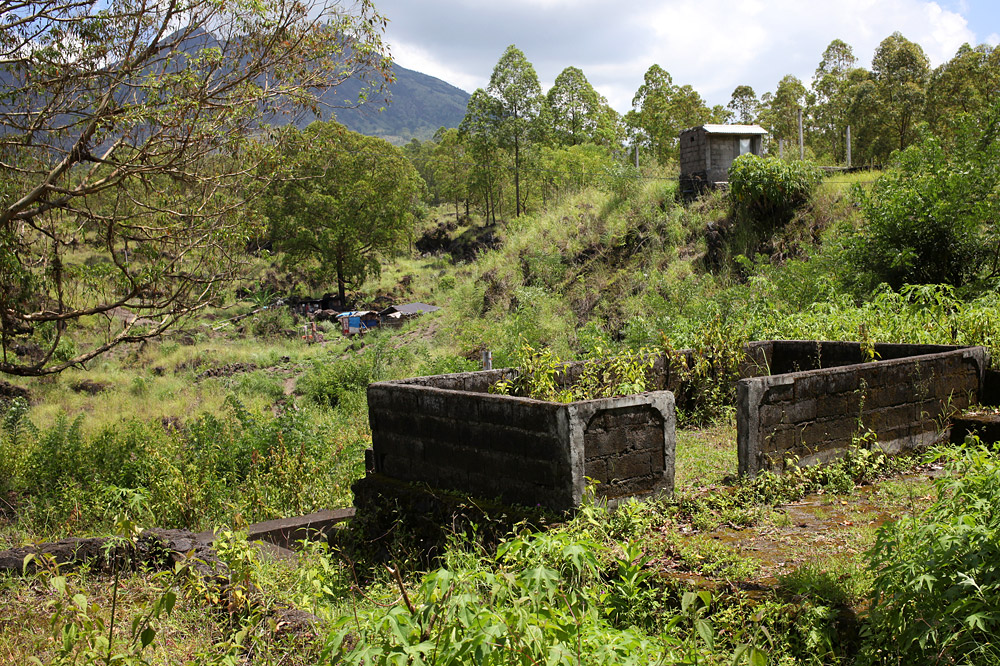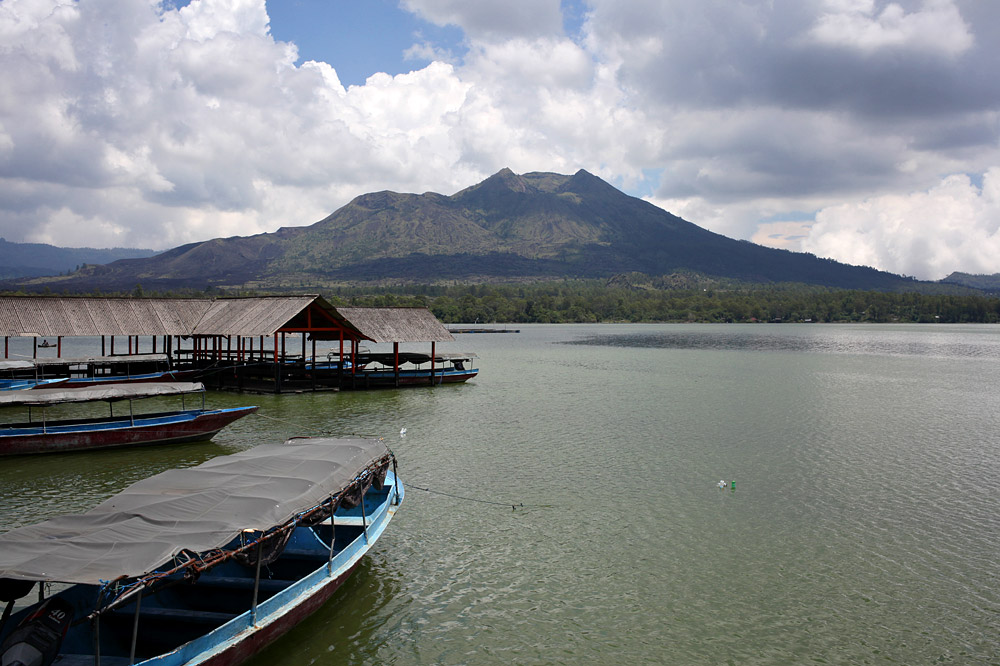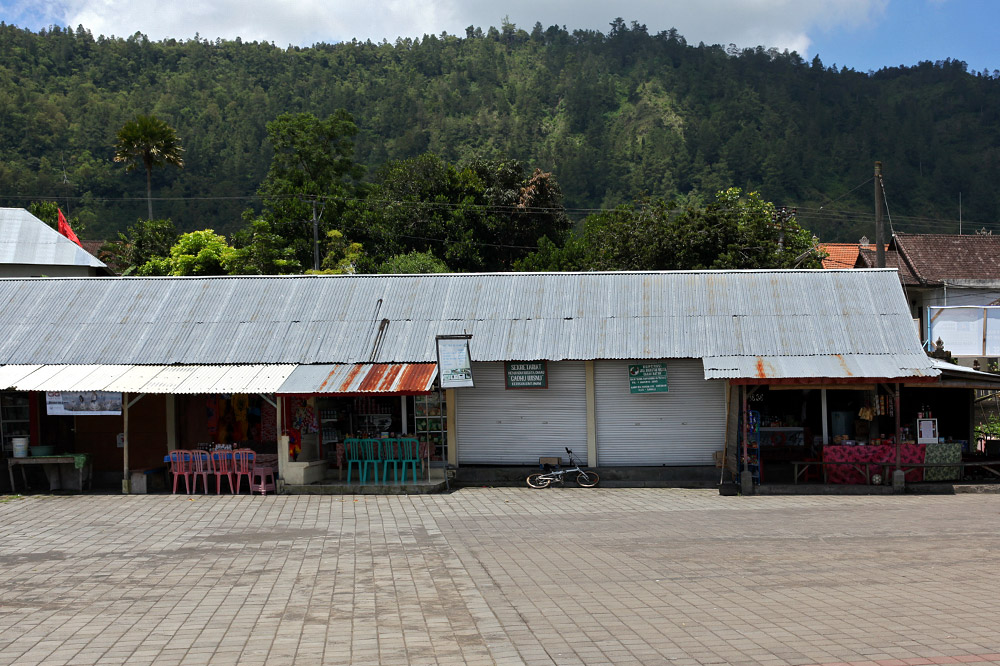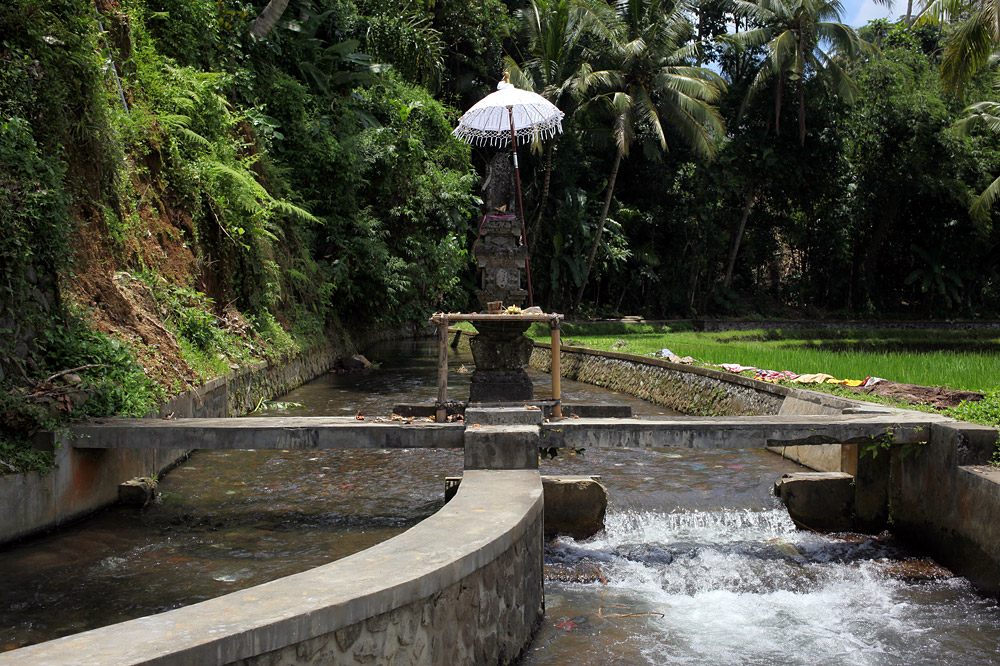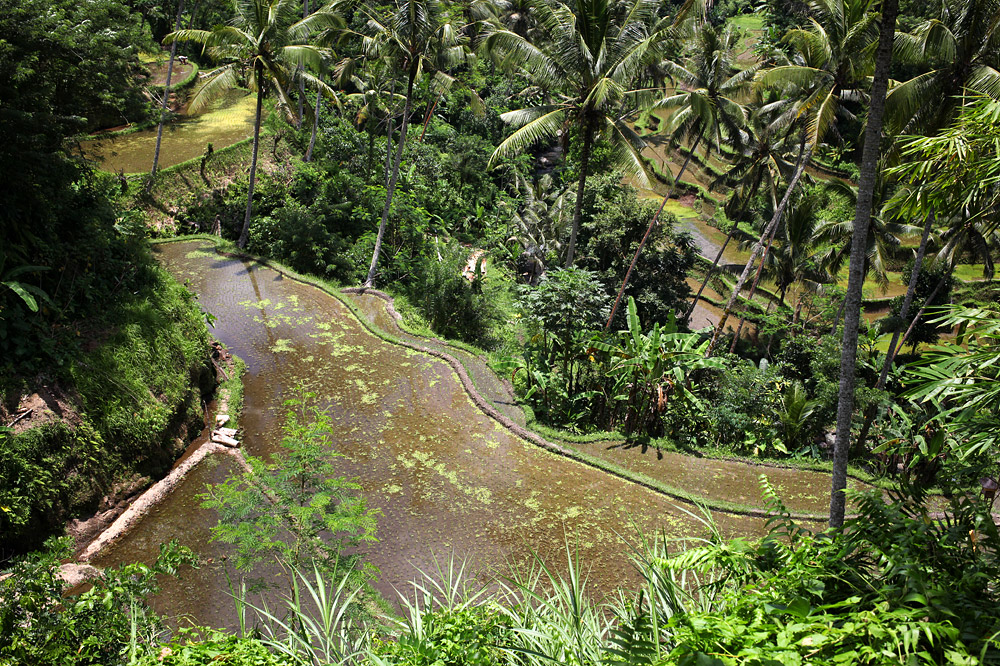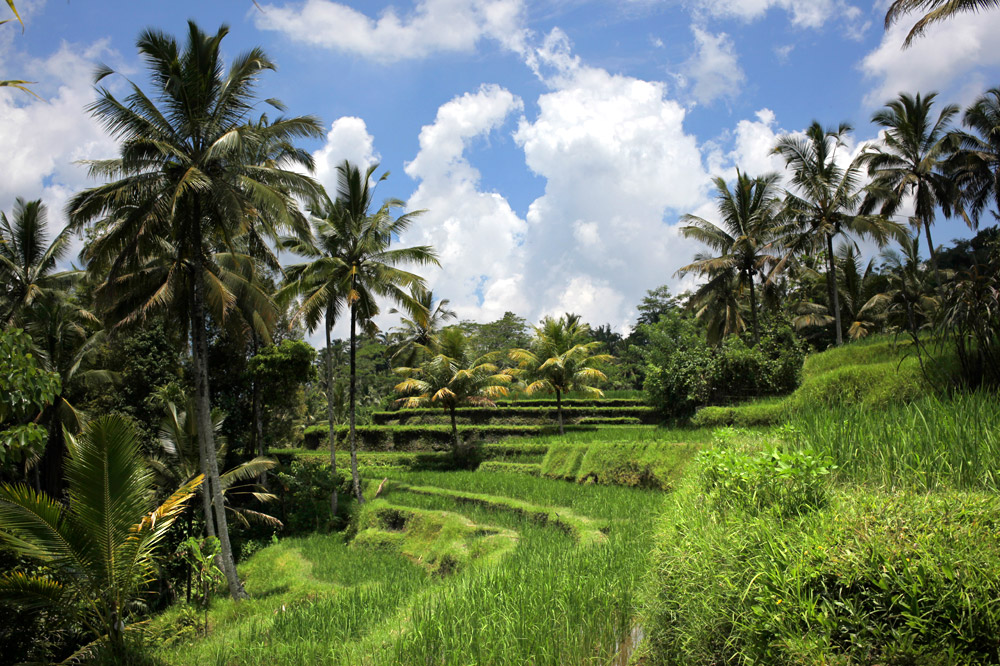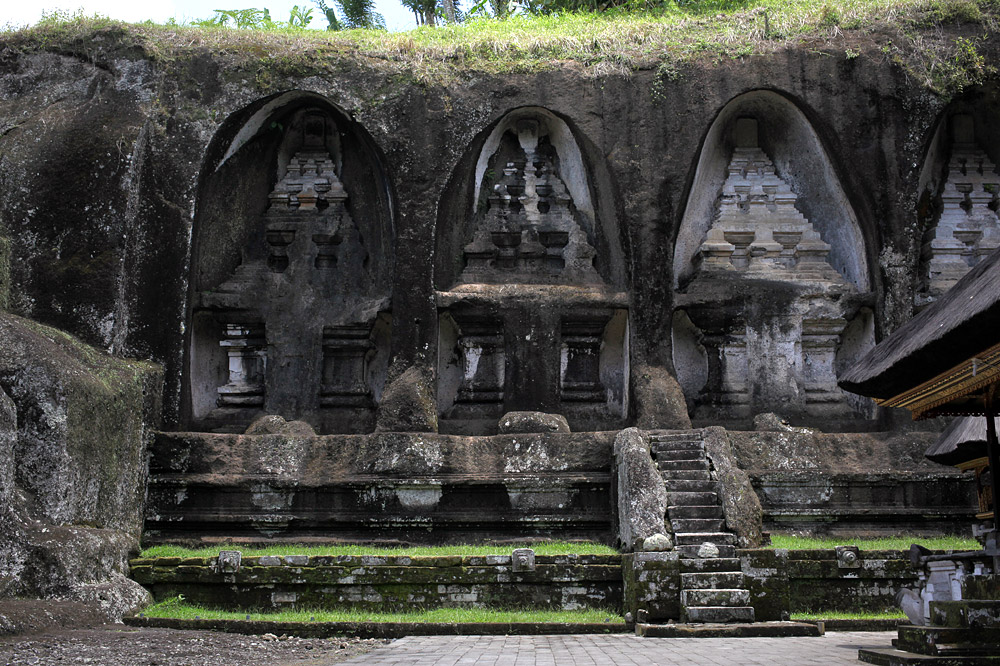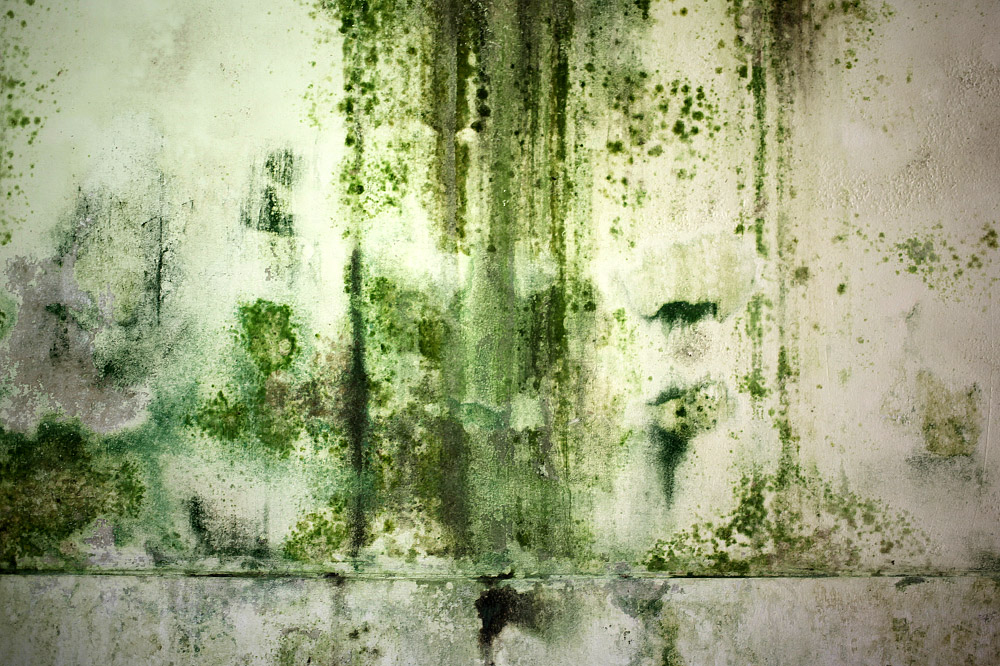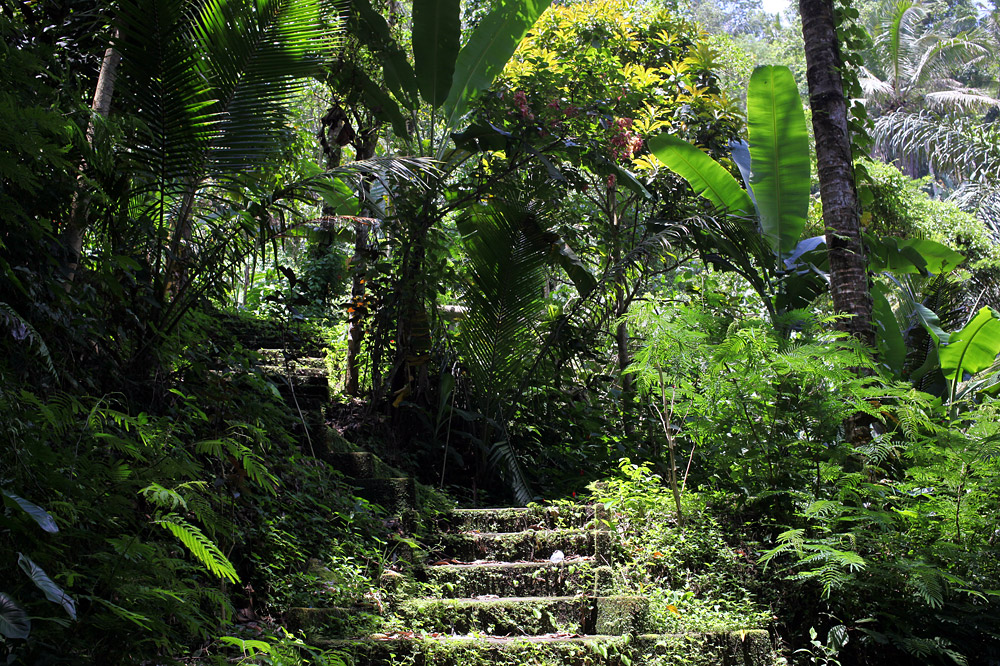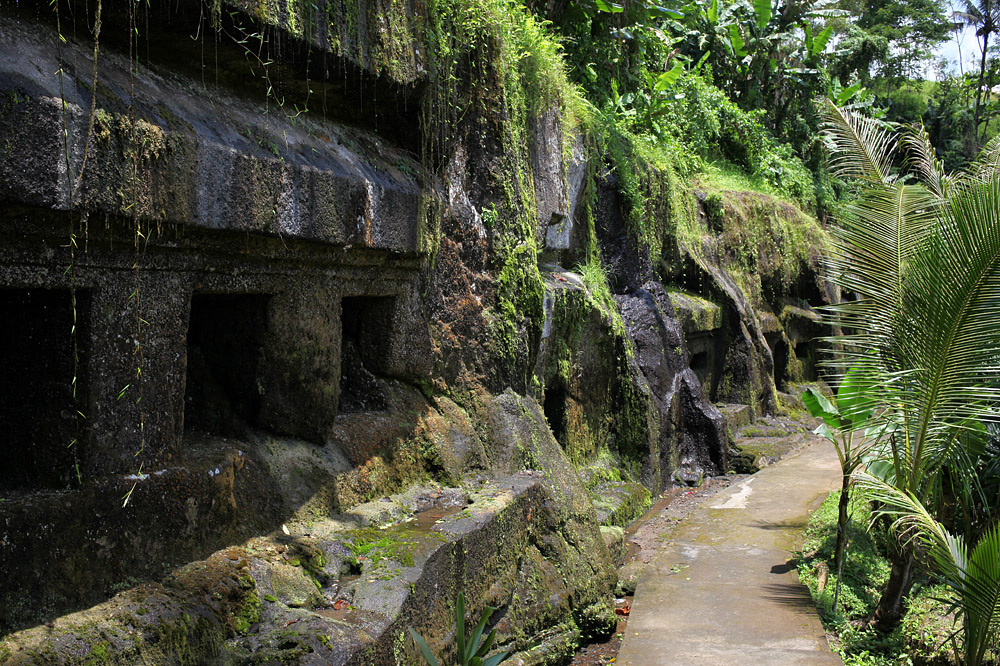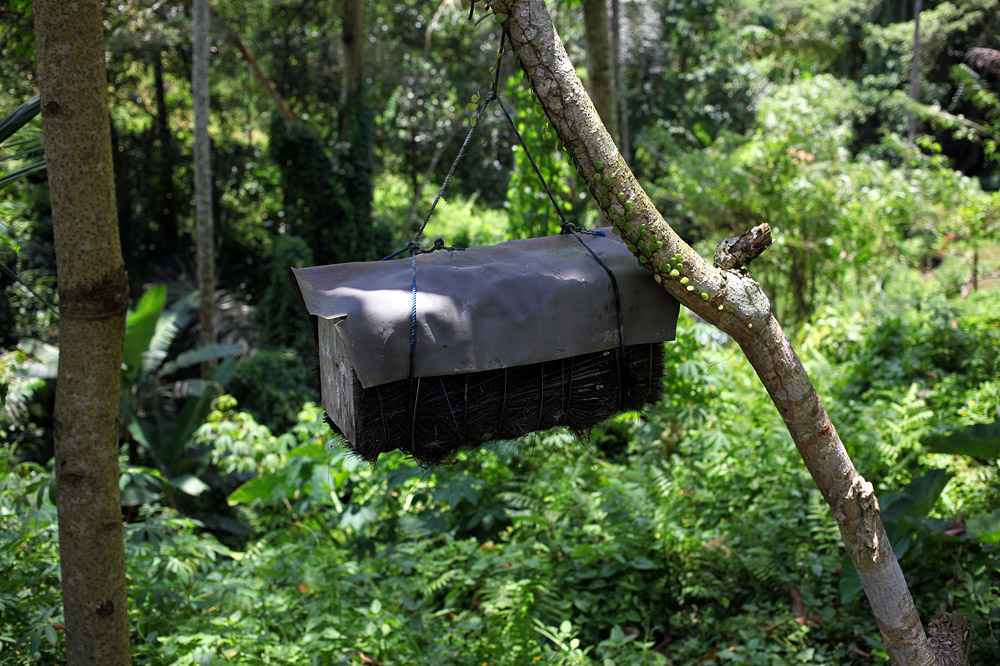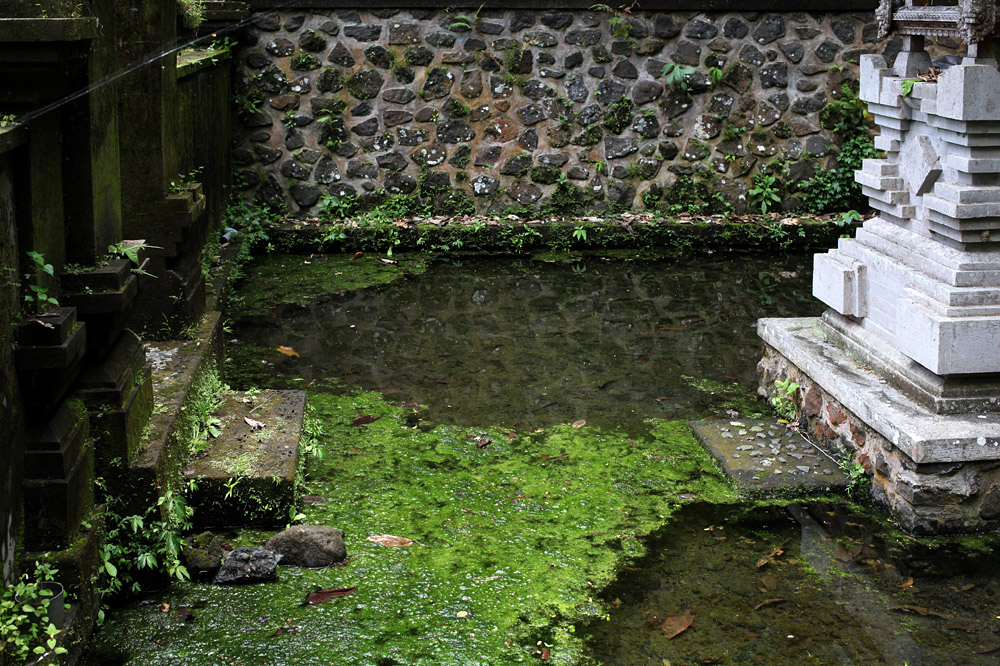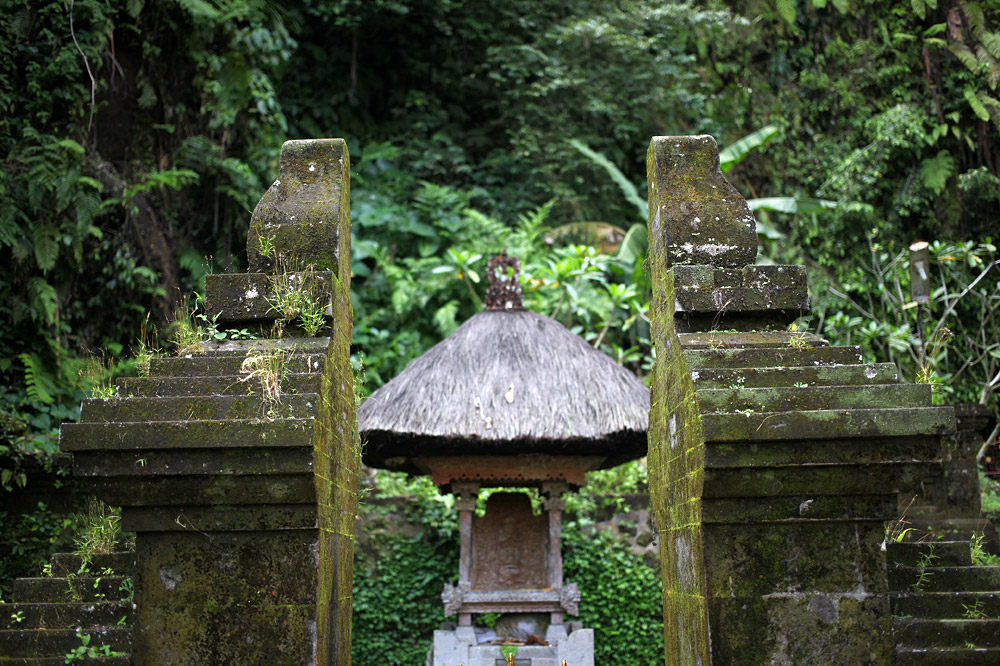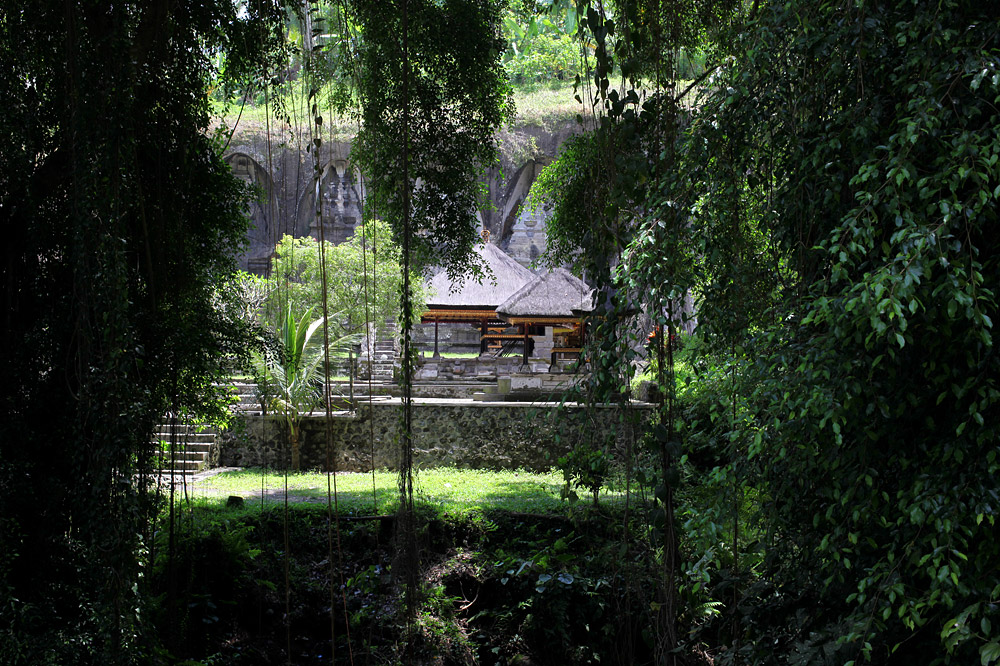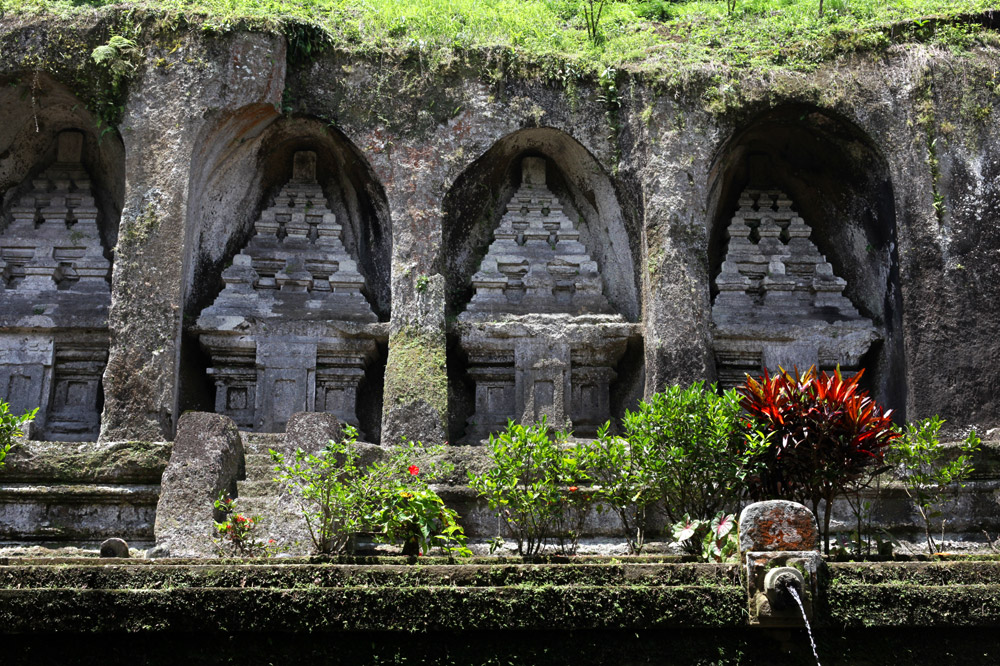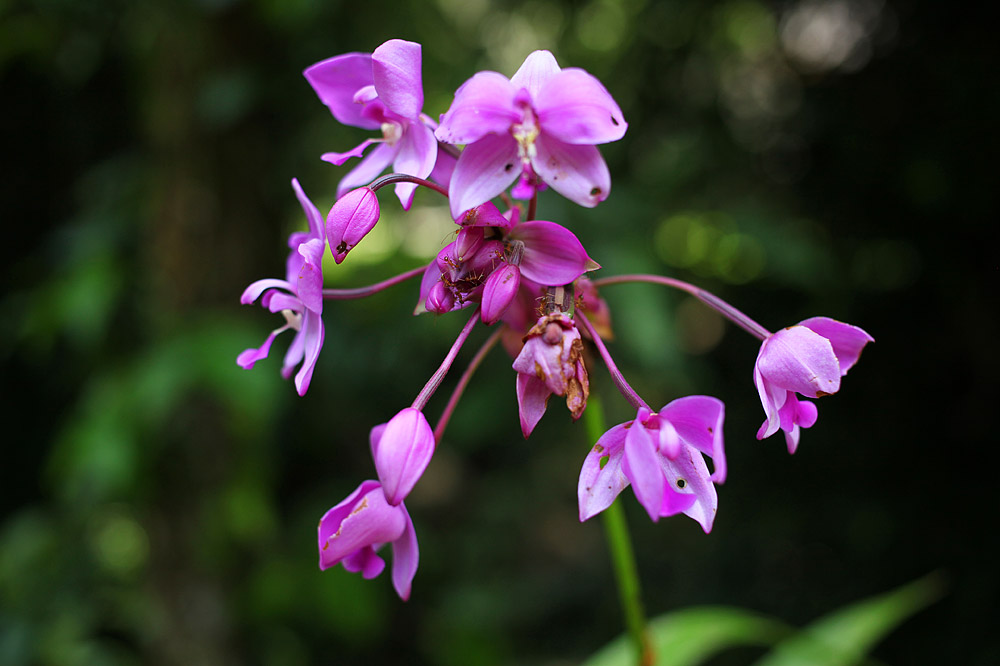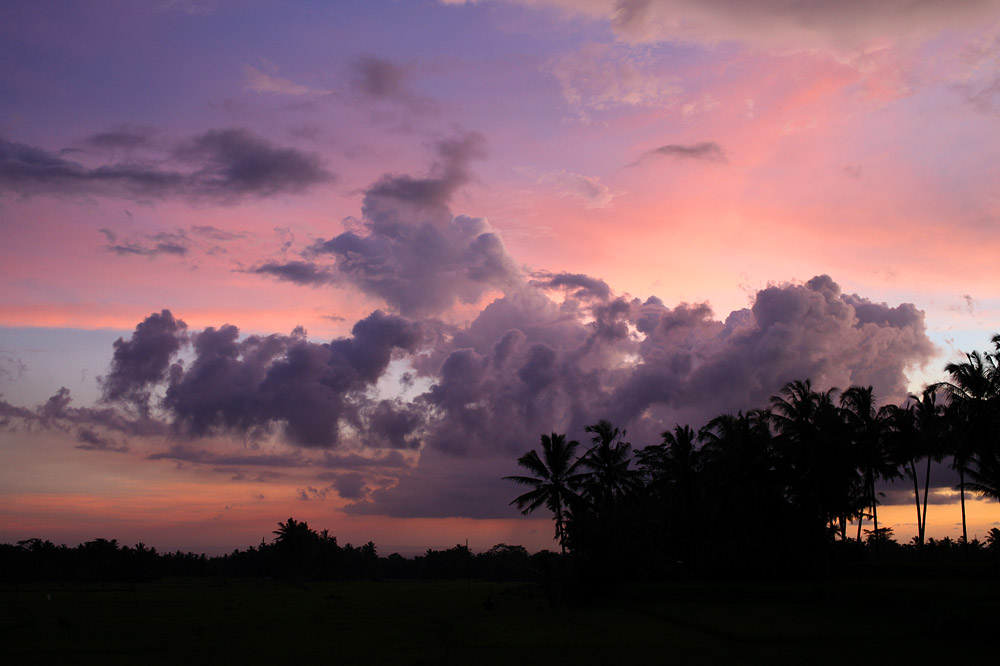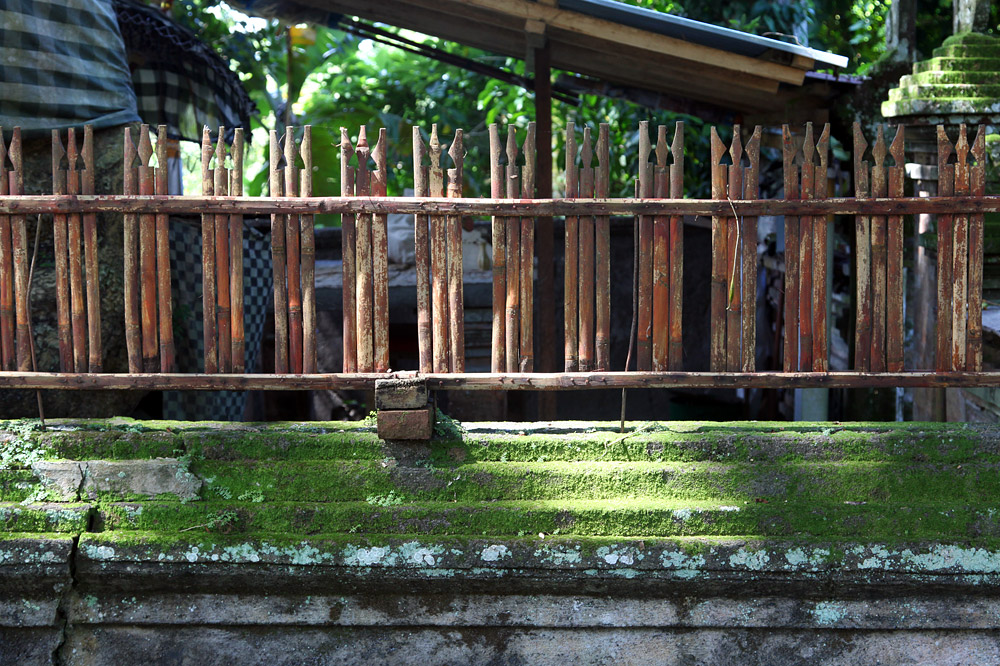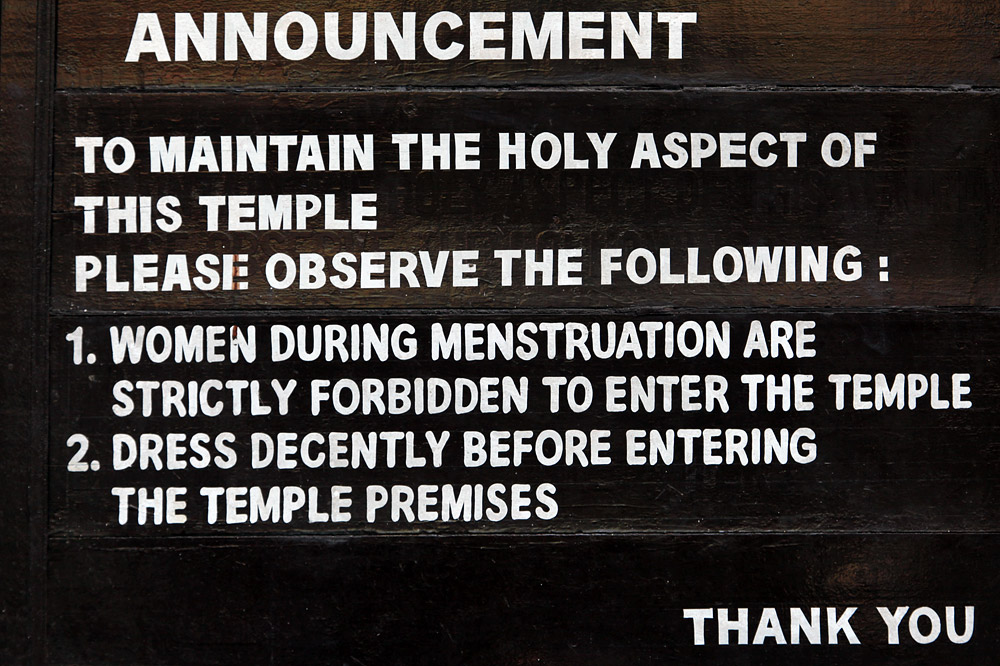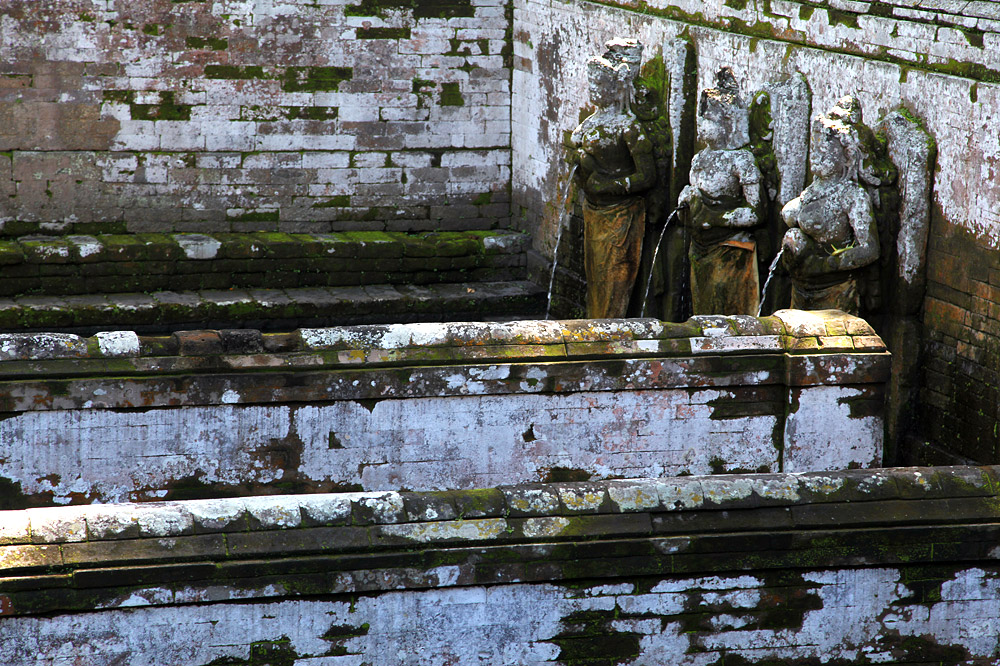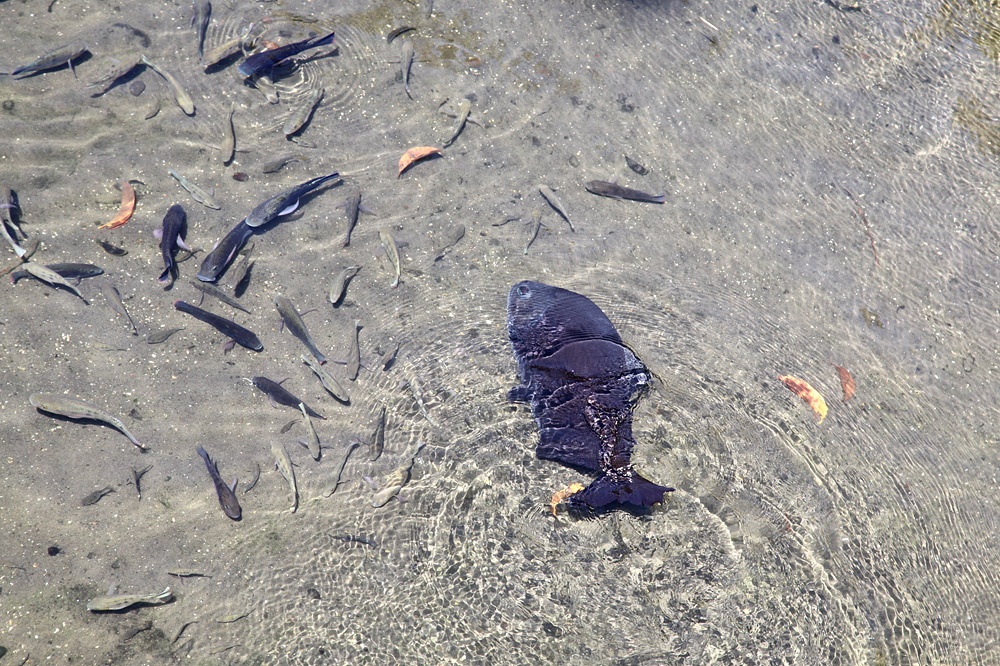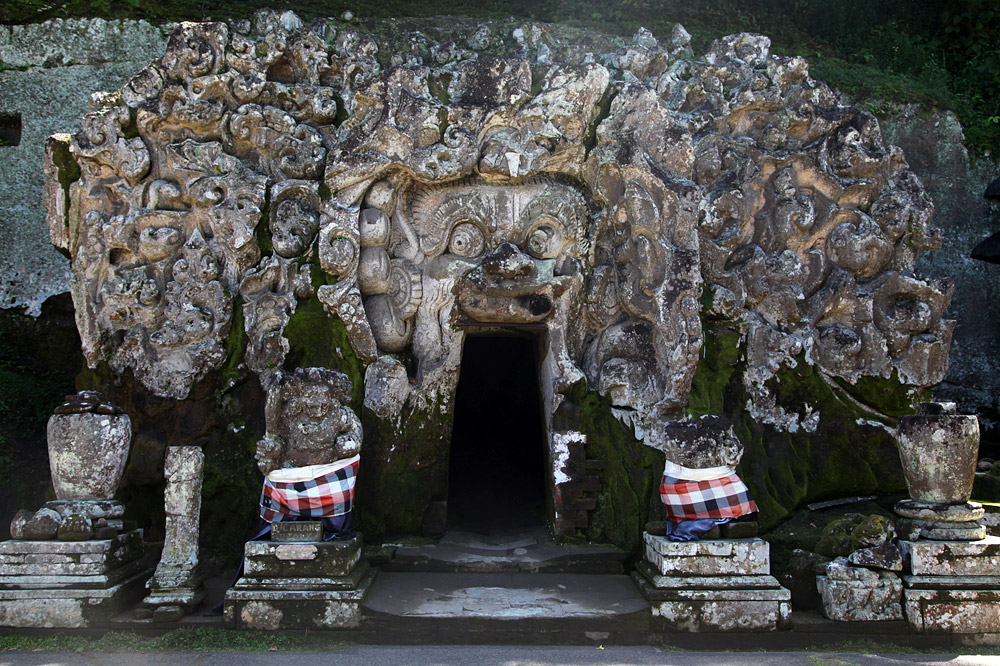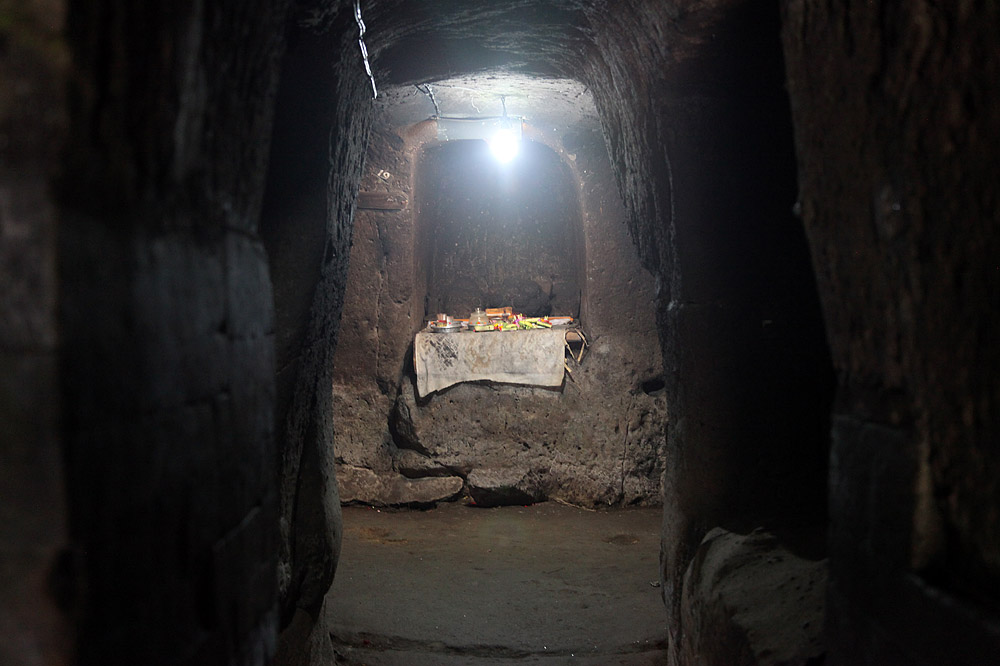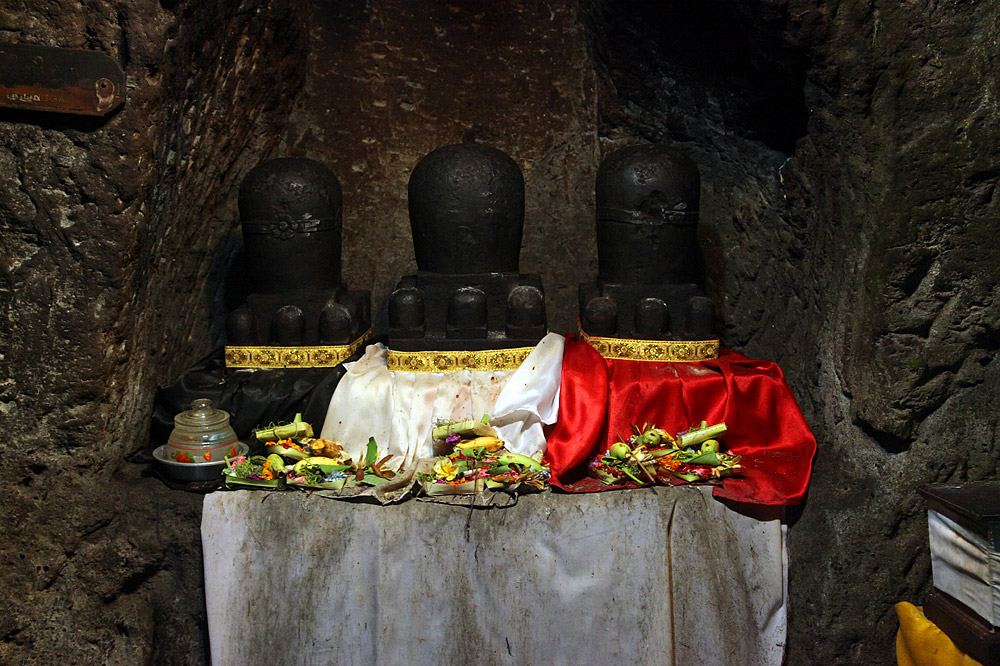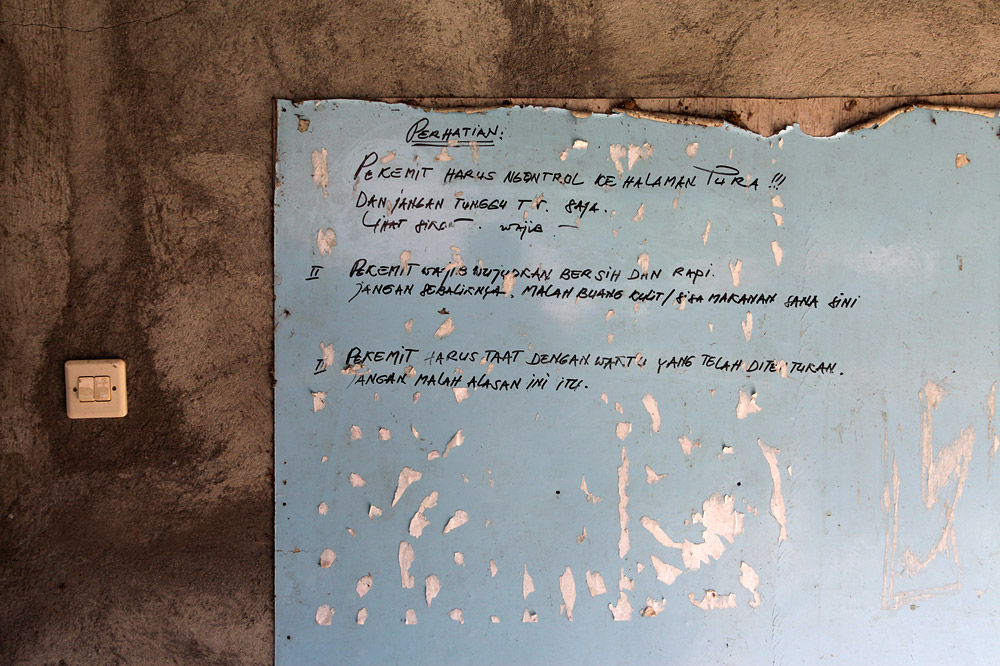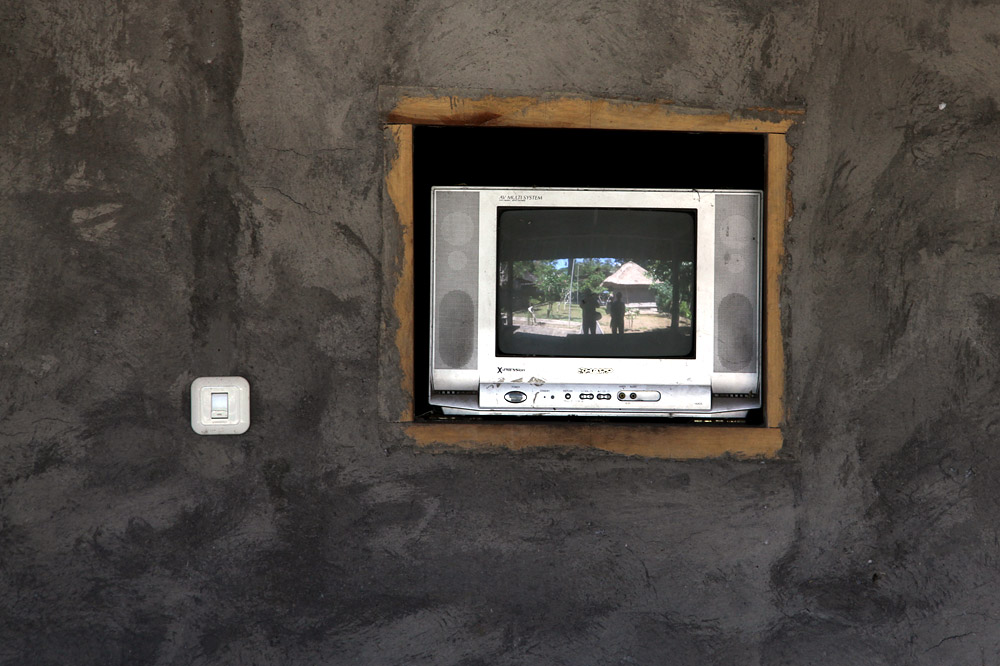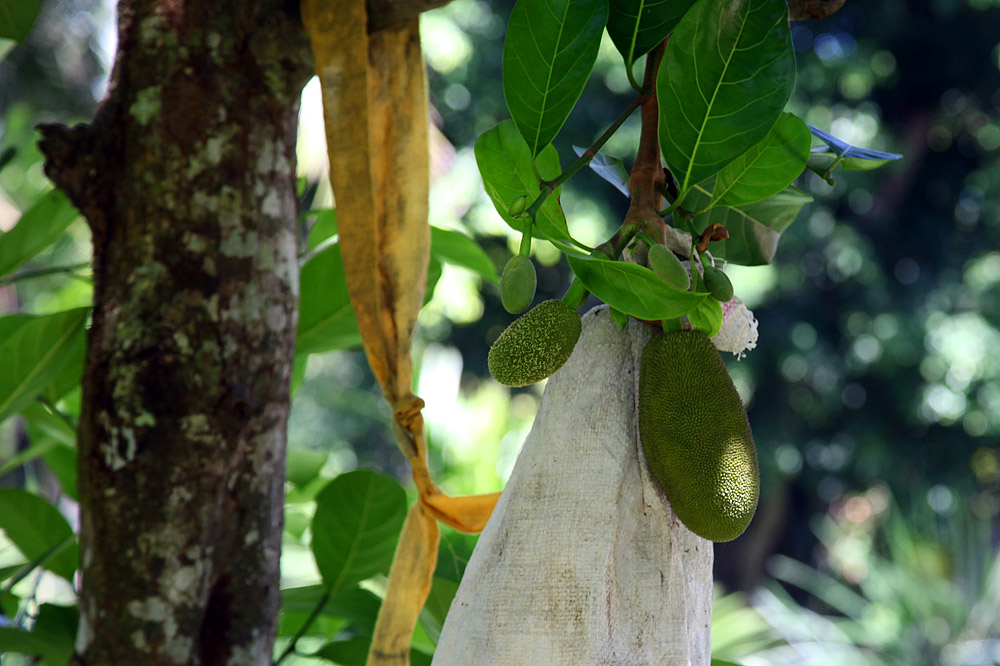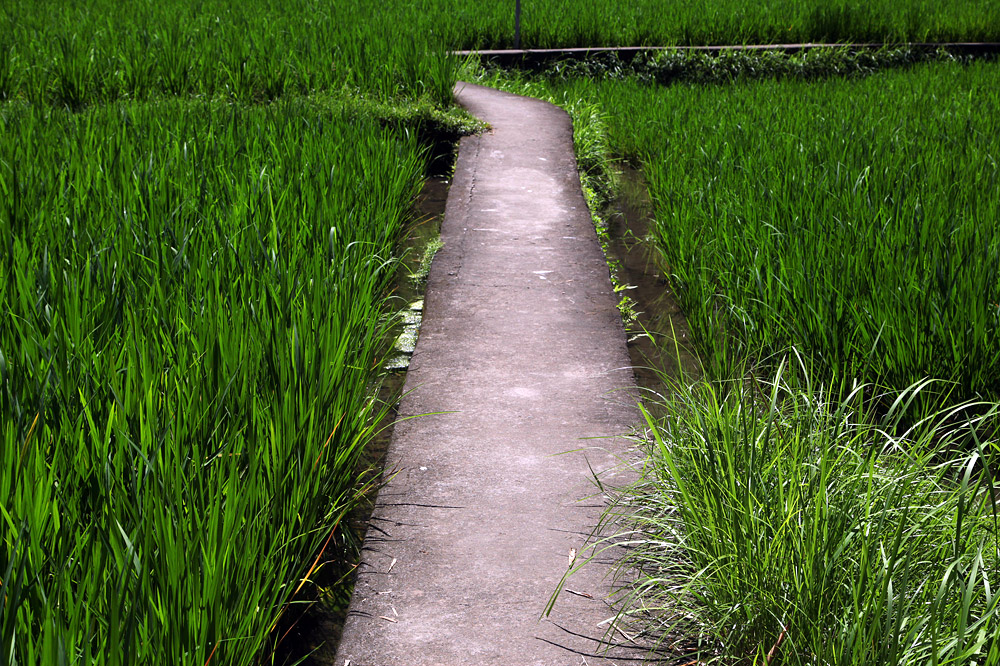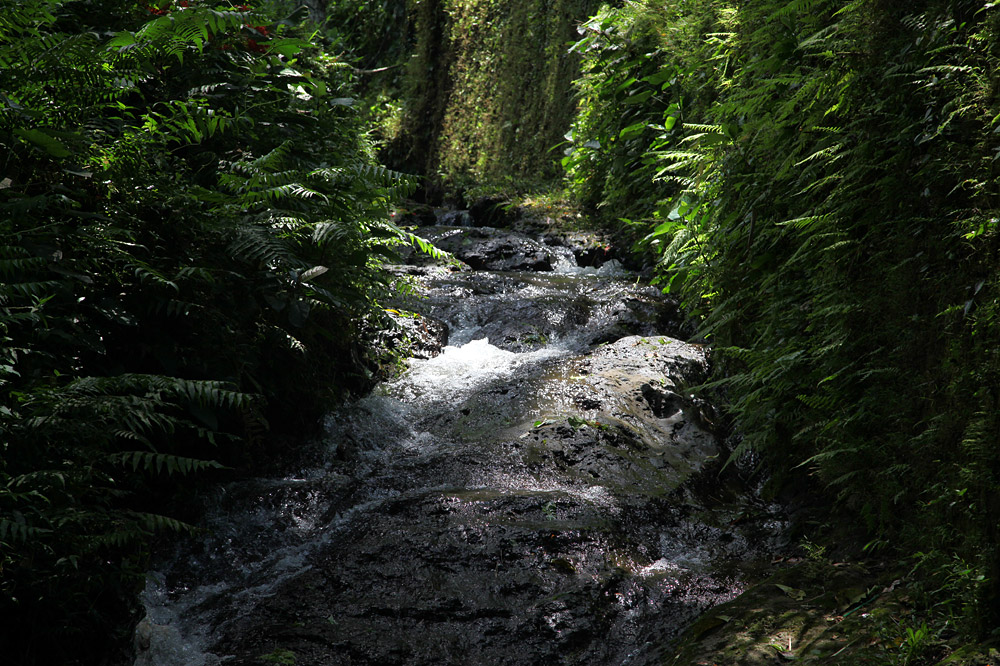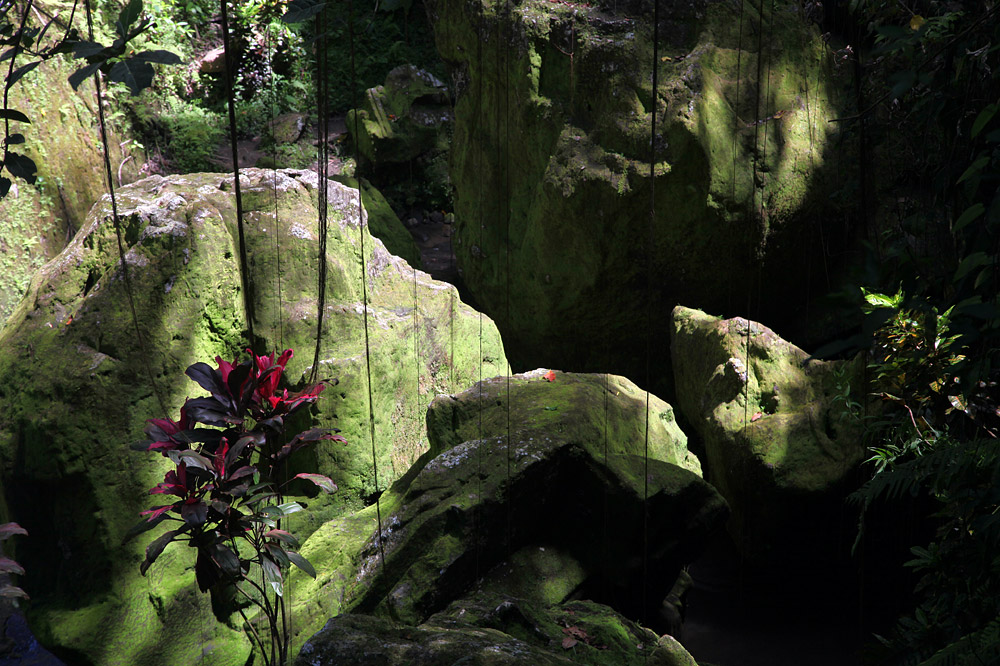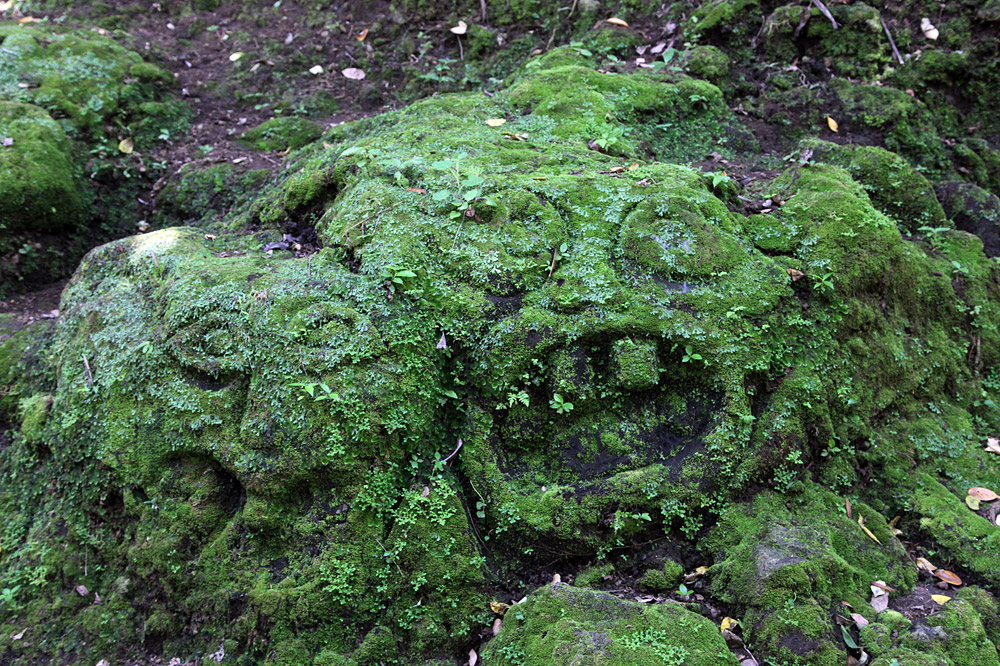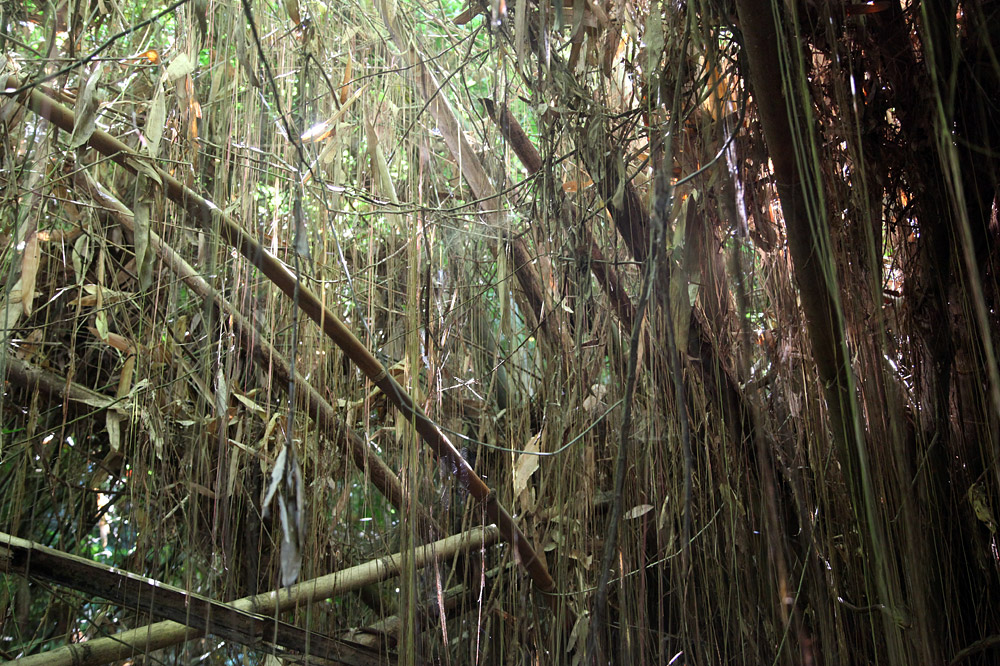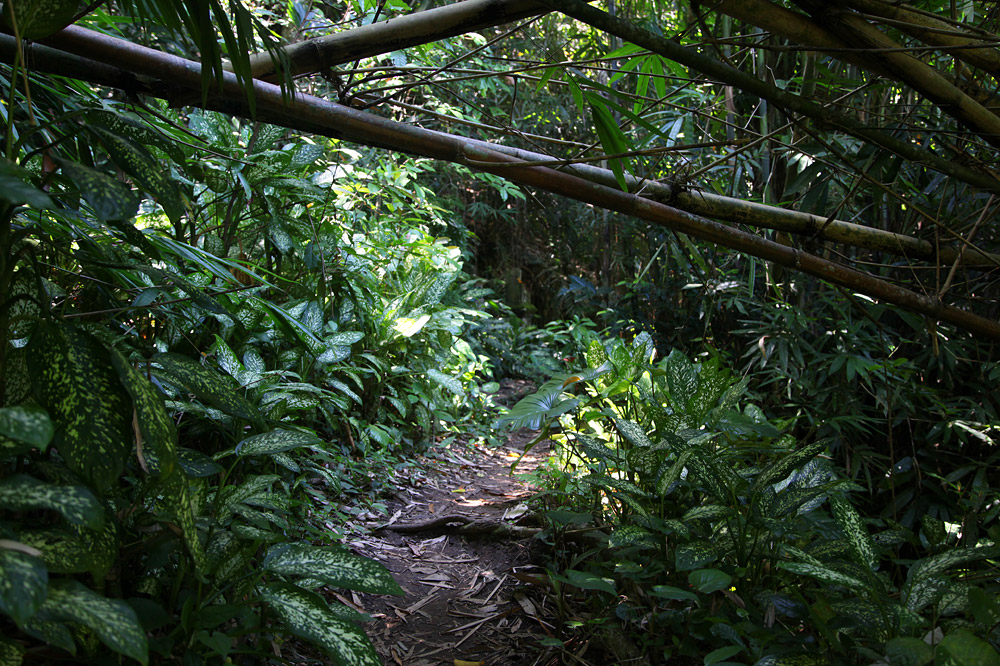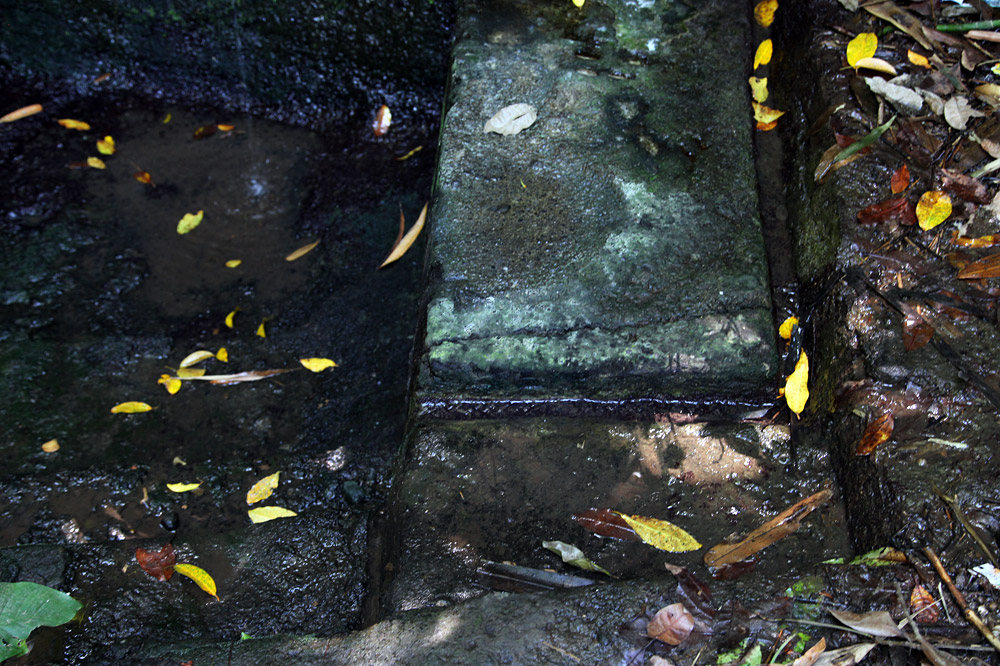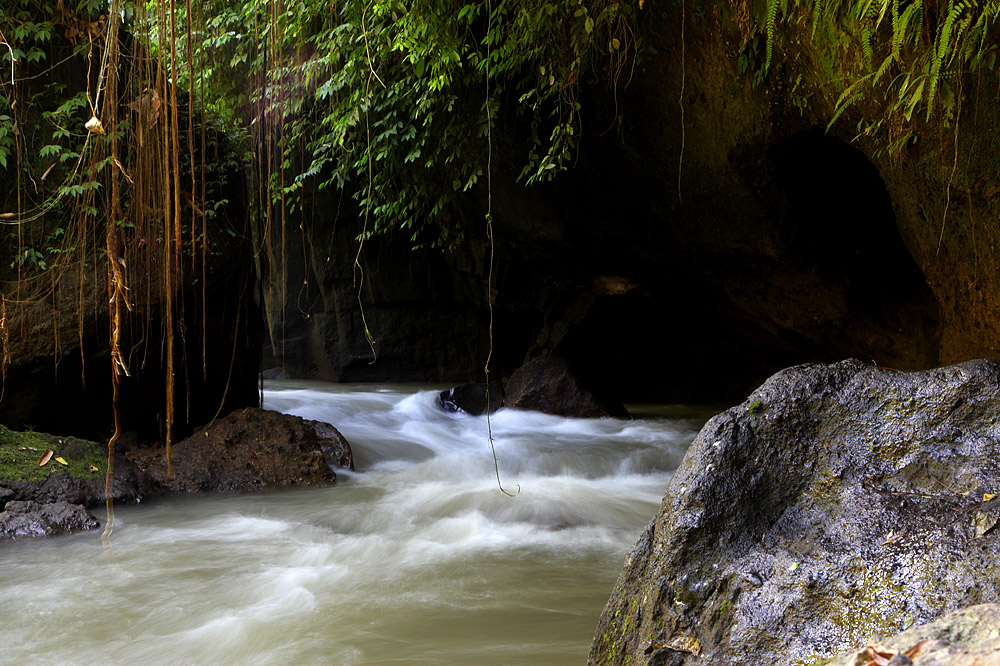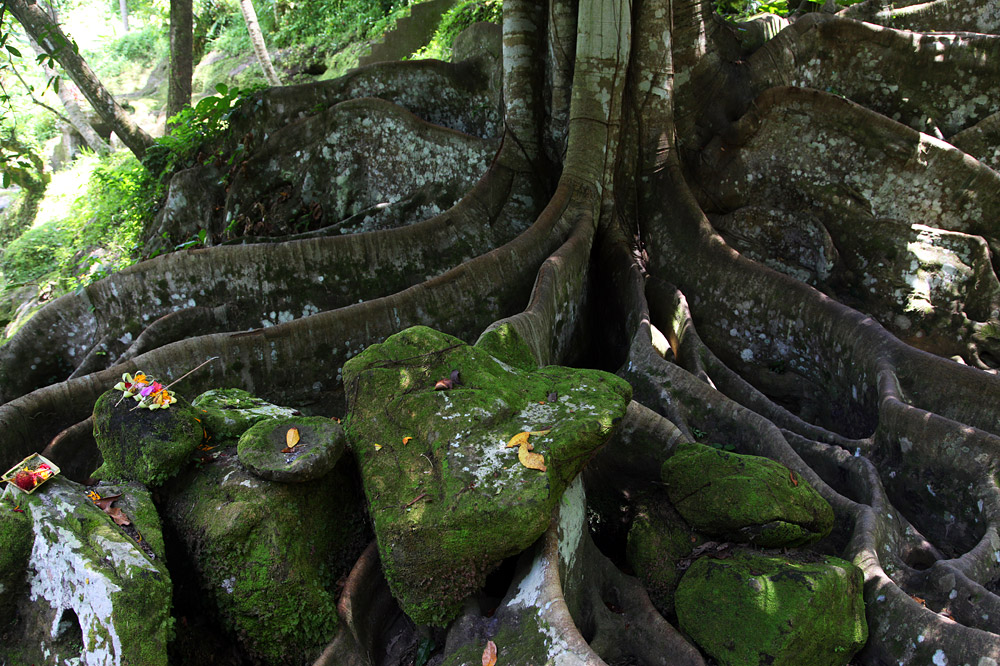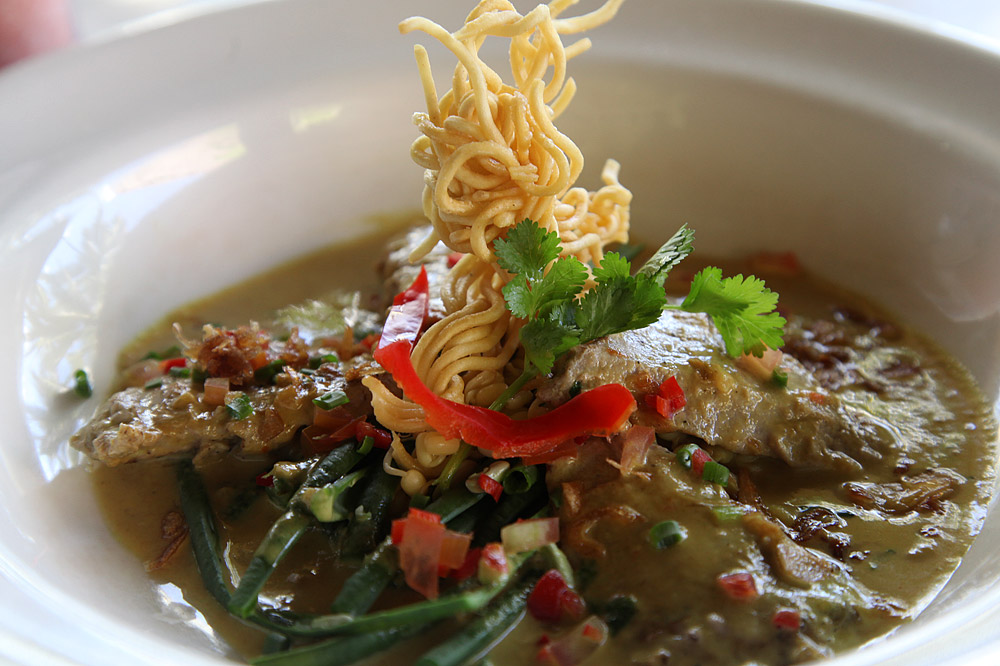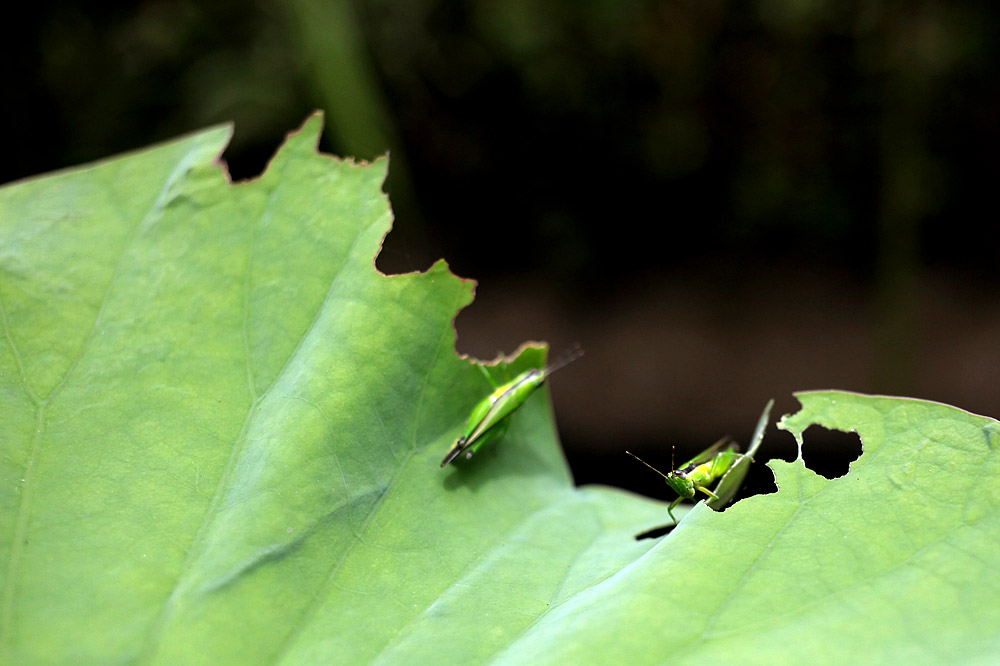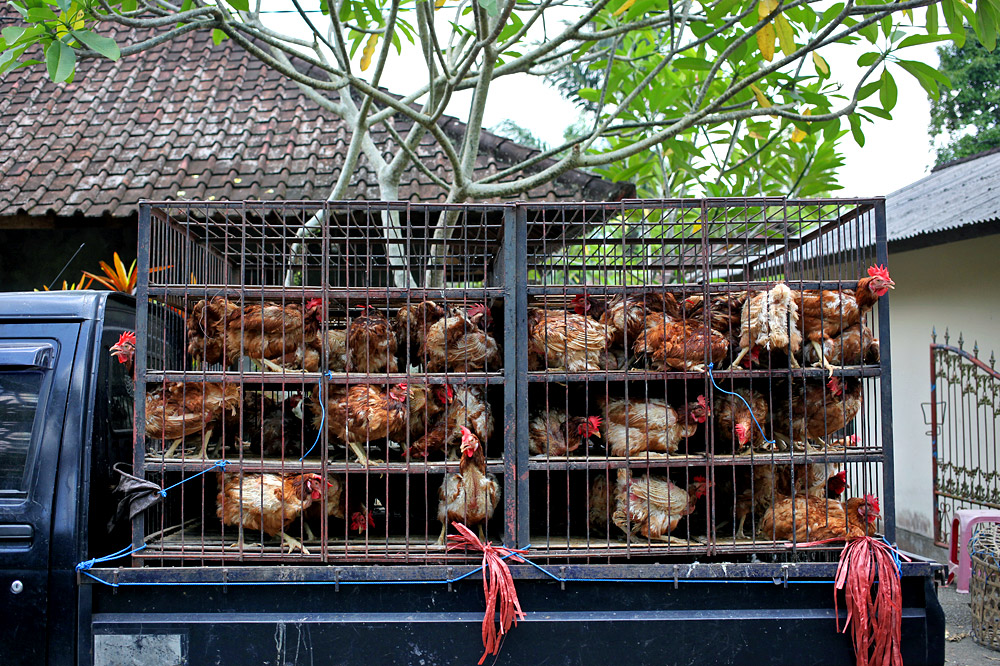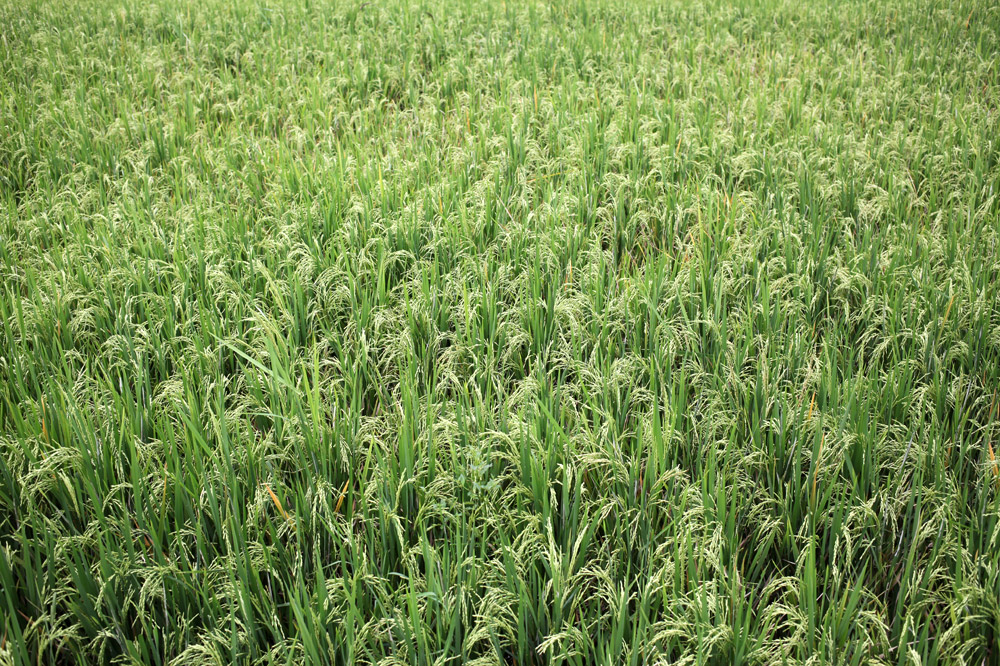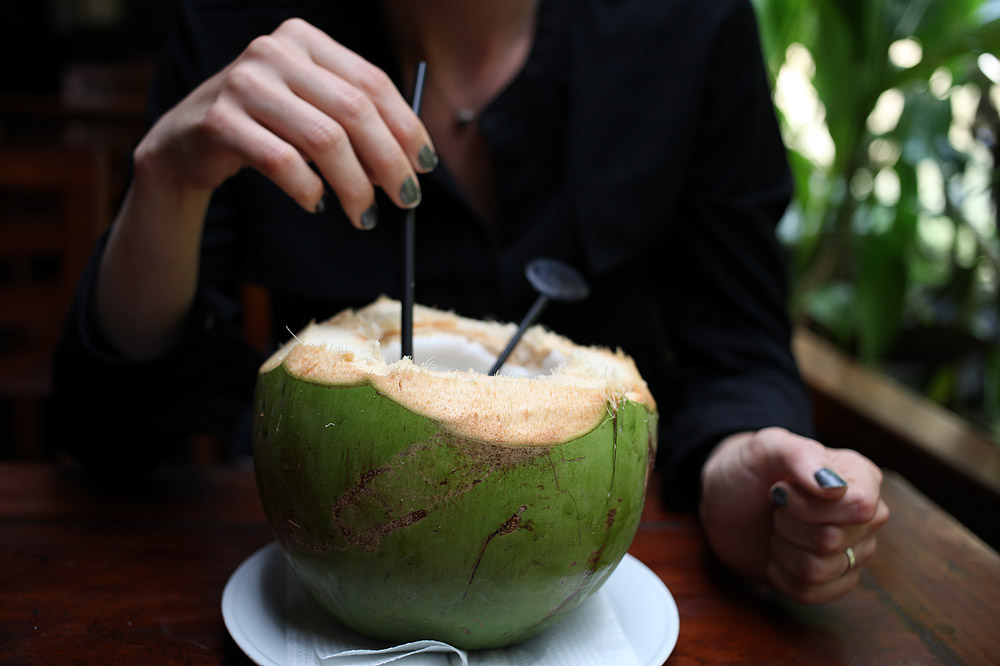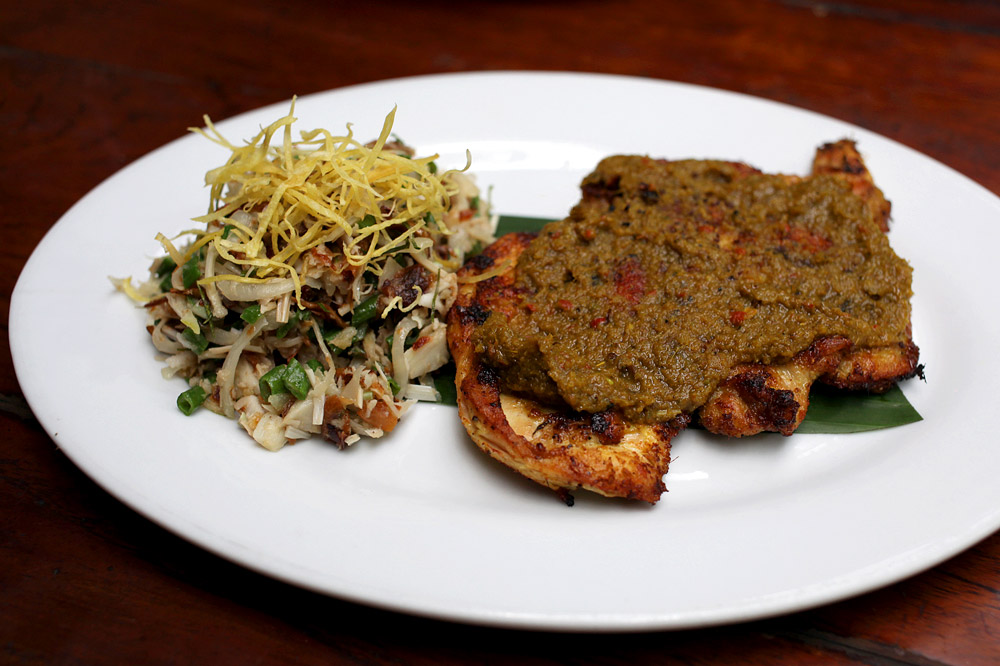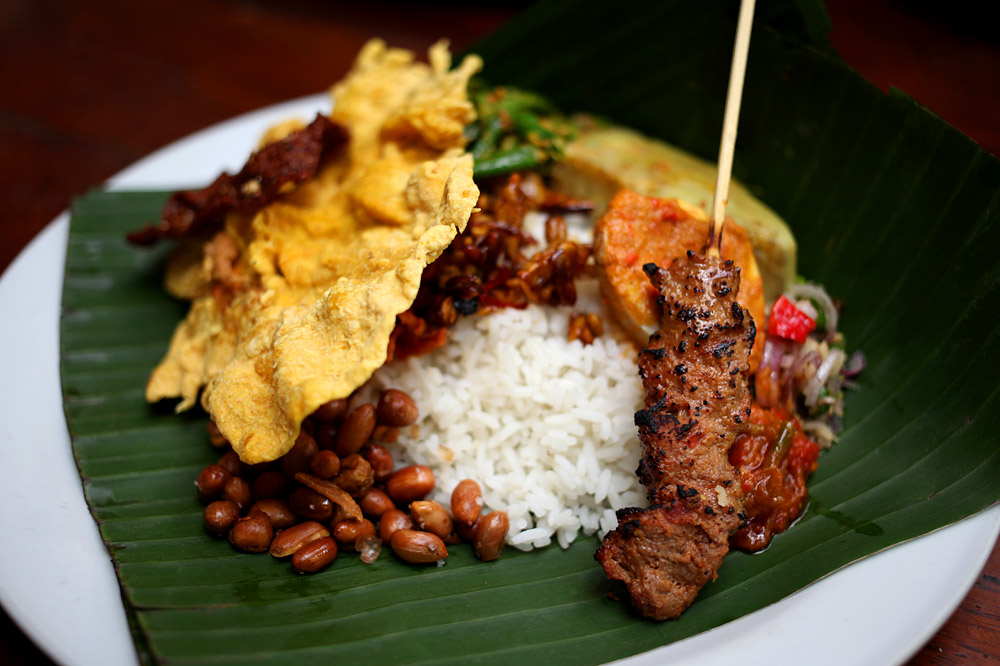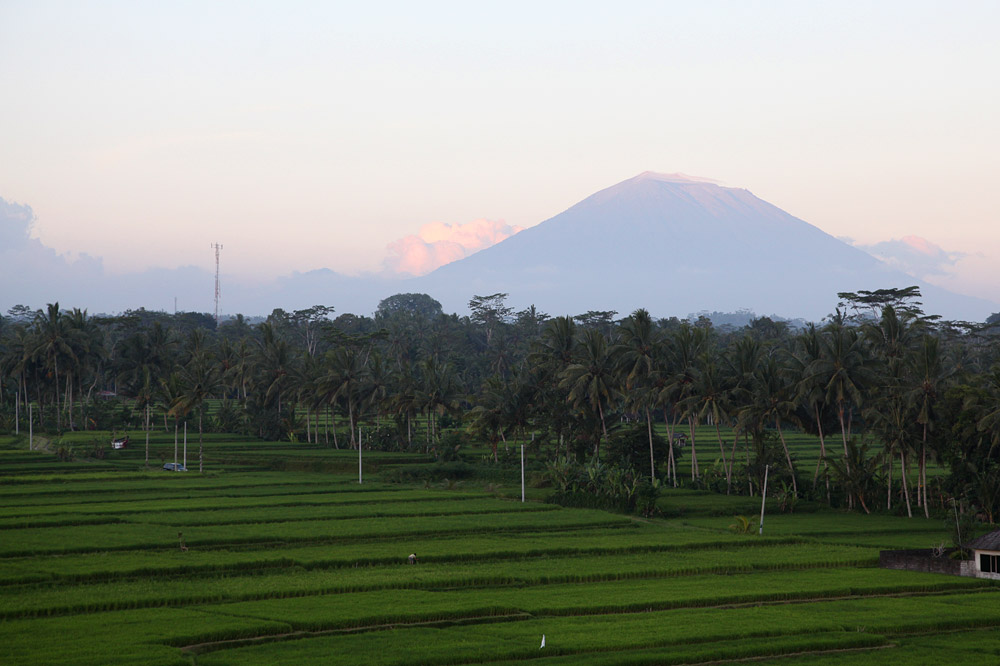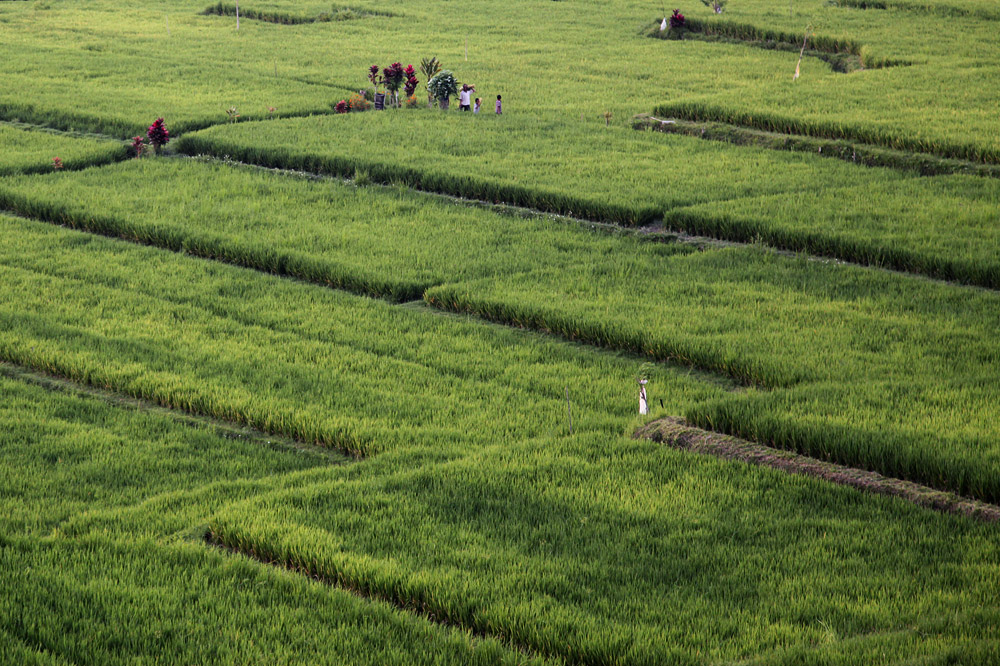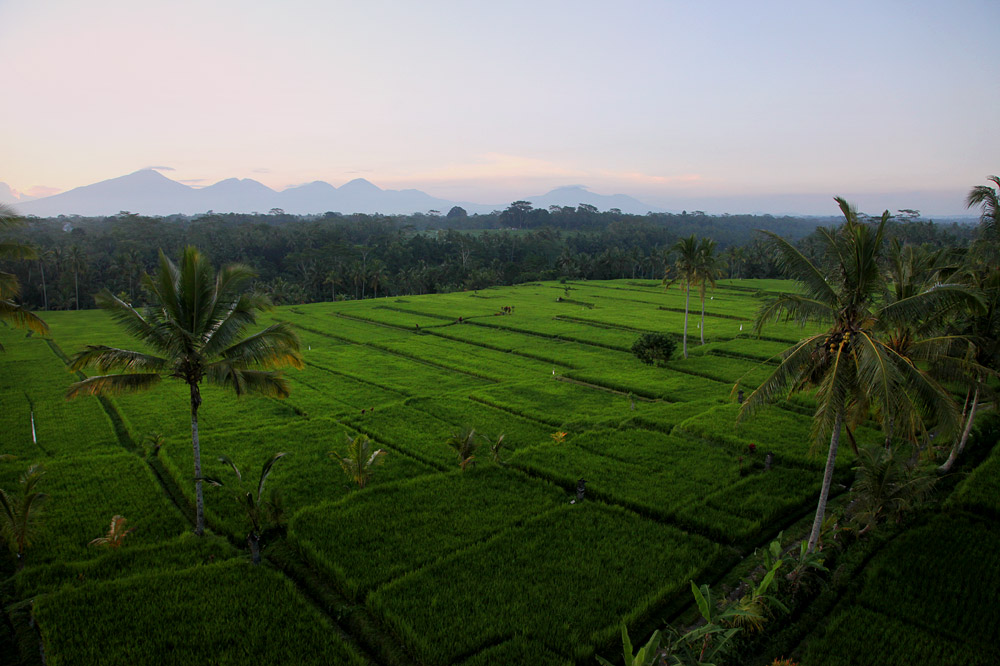Ubud, Bali 2: Scooter Adventure, Gunung Kawai Temple, Goa Gaja Temple, Savoring the Last Moments in Paradise
After washing a variety of sweaty and soiled clothes in the shower, we hung them outside to dry and ate a filling breakfast at the table overlooking the paddies.
Our pack was loaded with snacks, and the scooter was repacked with rain ponchos.
Driving north, we passed craft villages, rice terraces, and began a steeper ascent to the top of a ridge. The air was cooler up there and people were growing produce like limes, oranges, and cabbages instead of rice.
A beautiful and sprawling view of volcanic peaks and Batur lake was before us. Little streamers of white smoke rose from small agricultural fires. The main ridge road was well developed with restaurants, most of which were sad and empty looking.
While looking at the map, another foreigner scootered up to say hello and ask us if we had to buy a ticket to get into the park. He explained that a man came up to him and offered the “required” park ticket for a couple bucks. The writing was in Balinese, so he couldn’t read it.
We had been offered no ticket, and told him it seemed fishy. He smiled and shrugged. A Timon-like attitude is necessary when you’re scootering around paradise.
We wished him safe travels, then turned right and descended the winding road to the lake. A steady stream of slow moving and groaning trucks was hauling volcanic rock and other raw building materials up the hill.
At the base of the hill, a stalled truck had completely backed up the road in the both directions. Luckily, our scooter was narrow enough to get through.
On the western edge of the lake, we had the road mostly to ourselves. The few people we saw looked at us with neutral expressions. A long stretch of road went through rolling grassy hills peppered with large volcanic boulders. A variety of building foundations made it seem like the area had been destroyed by volcanic activity.
After driving almost halfway up the long side of the bean-shaped lake, I was starting to get tired from driving. J wanted to keep going, but it wasn’t clear if the road even went all the way around the lake and our scooter had a limited supply of gas. If I had looked at the map closer, I would have realized how close we were to the northern coast.
Instead, we backtracked and went into the village on the south side of the lake. It was mostly empty, almost a ghost town. We stopped to rest at a picnic table in a modest marina. Immediately we were approached by a talkative man on a scooter who wanted to sell us some of his art. We declined, knowing that this wasn’t going to be a good place to relax.
The view from the ridge road.
Scoopy!
Agriculture and aquaculture.
The base of the volcano.
Our little winding road around the lake.
Ruins.
The boats at our temporary resting spot.
Deserted.
We took a smaller road back down the hill to Gunung Kawai Temple. The 11th century temple complex is famous for its rice terraces and numerous shrines cut into the rock faces on both sides of the Pekerisan River. And like the more touristy temples in Bali, it seemed unashamed to jam a maze of craft stalls to wade through just to get to the spiritual scenery.
The day was so hot that even walking down the steps into the valley made me soak through with sweat.
It was a beautiful, timeless place. J and I hiked down to the river and ate a snack lunch on boulder islands, then explored the rest of the complex.
Water dividing channel.
Terraces from above.
Terraces from the side.
Secondary shrines cut into the hillside.
Mildew bathroom.
Stairs to the river.
Pathway to more shrines.
Mystery box.
Flooded shrine.
Another angle.
A view of the secondary shrines from across the river.
Primary shrines, with hill fed fountain.
Ants and orchids.
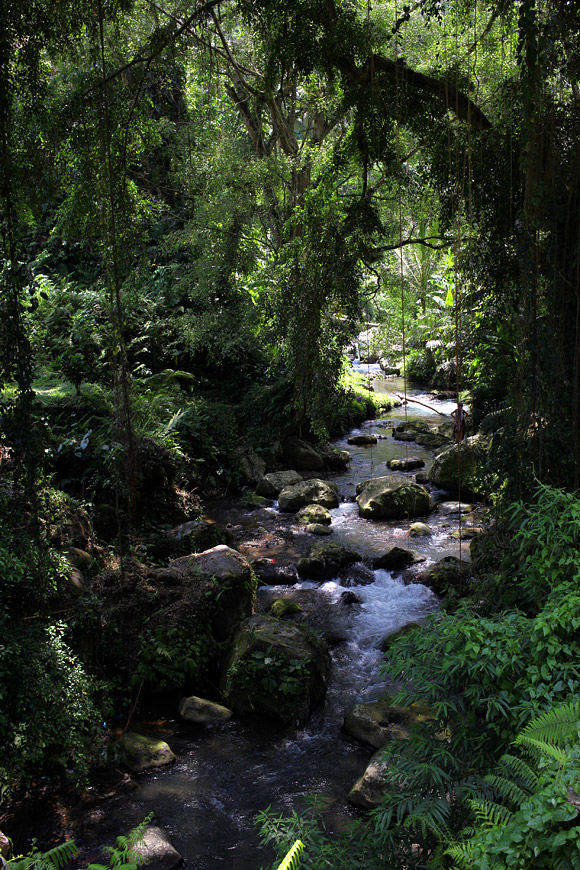
The river.
Grand cloudy sunset.
On the way home, we got lost a few times. We bought a slab of jackfruit from an old lady with a large blade. She double bagged it in plastic knowing that the white goo that leaks out of the skin is impossible to remove.
At home, we prepared the fruit as one might dissect and animal, swam, snacked, and made afternoon coffee.
That night, we drove into town for dinner and made it back in time for a colorful and bat filled sunset.
–
The following day, we got a later start exploring the 9th century Goa Gaja Temple and its famous Elephant Cave. Because of the time and the temple’s closeness to town, there were far more tourists. J and I stuck to the less crowded areas and decided to take a detour onto a unpaved path in the jungle.
Like the temple from the day before, Goa Gaja was in a river valley. Our path followed the river and passed by old ponds and still working irrigation channels cut into the stone sides of the valley. We felt like tomb raiders, but without the bushwhacking.
The trail was mostly empty except for a woman and child selling cold drinks from a cooler. Couldn’t she have chosen a more traveled path?
We bought a sweet tea and descended the narrow and collapsing path that hugged a cliff edge above the river. Some pieces of the trail were missing, others were muddy. A death fall was guarded by an untrustworthy hand rail made of bamboo.
The trail stopped on a flat rocky area with carved channels dripping water. We ate snacks while sitting on large leaves to keep from getting muddy.
Bamboo fence.
Seems normal enough.
Bathing ponds.
A big fish in shallow water.
The elephant cave.
Inside the cave: still hot.
Elephant foot altar.
Notice board in the prayer halls.
Embedded TV.
Sacking young jackfruit.
Footpath.
Tributary.
Massive mossy boulders.
Ancient faces.
Dangling vines.
The secret path to the river.
One of hundreds of channels.
Our snack spot by the river.
Fig tree.
For lunch, we went to a restaurant built onto a hillside overlooking a river and rice terraces. The food more more expensive, but stylishly presented. The owner of the restaurant had two very hot looking golden retrievers that he let us pet while they rested on the cool tile floor.
A fancy fish lunch.
The last few days in Ubud, we tried to relax and get in as much swimming as we could. We finally had neighbors, so the pool wasn’t as private.
At the villa, we used up the last of our groceries, played cards, and shifted our laundry indoors when it rained.
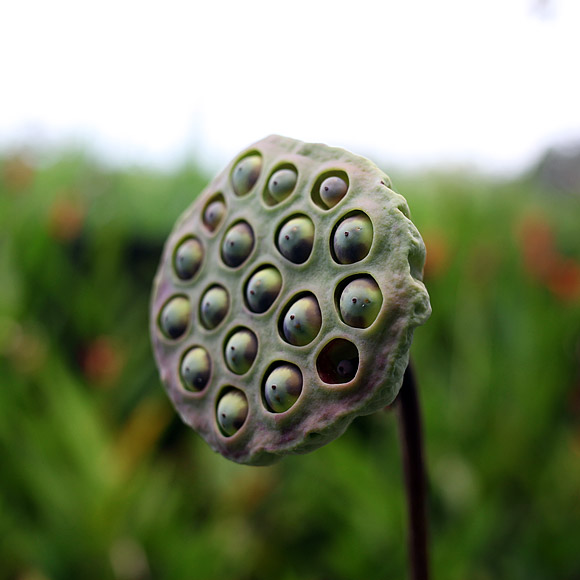
Lotus seed pod.
Nom.
Chicken truck.
Rice almost ready for harvest.
Gothic coconut.
Chicken with yellow curry sauce.
Nasi campur.
On our last night, the owner of the property invited us to the roof of his house to watch the sunset. His house was massive but tastefully constructed and furnished. After climbing many flights of stairs, we were at the highest spot in the area, overlooking rice fields in all directions. The view was spectacular and serene.
As the sun set, we watched people in the rice collect their gear, feed the ducks, and start heading home.
The volcano.
Fields from above.
Our last sunset in paradise.
Those farmers might have a hard life, but at least they get to wake up everyday in such a beautiful place. Their day is connected to a crop that is not only beautiful, but directly connected to the history and sustenance of the place they call home.
I live in an abstracted world of bullshit.


